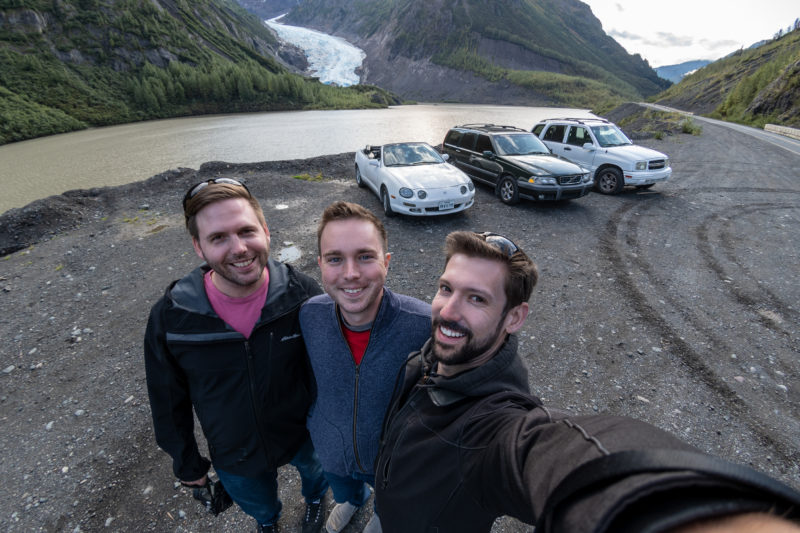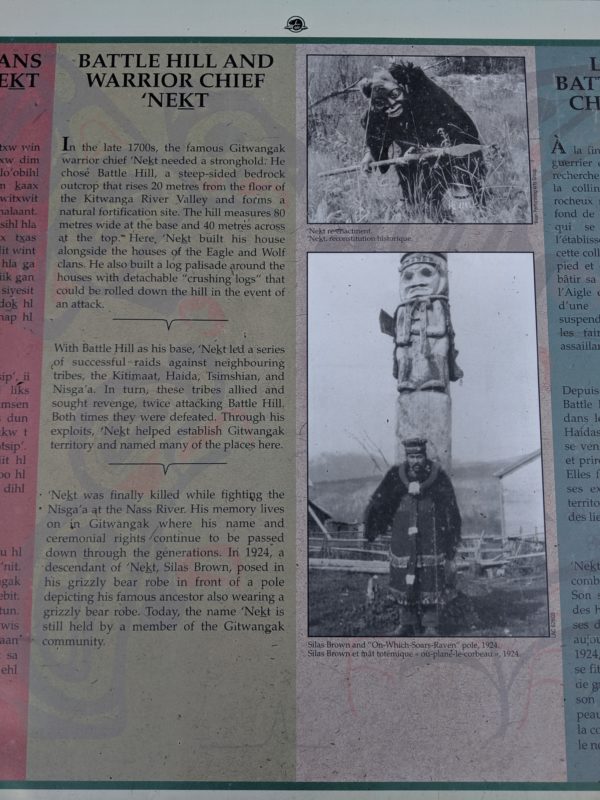We did not see much of Prince Rupert because of how early we left this morning. Evan did visit the local NAPA to fetch ramps and a few tools for the Volvo so he can get a better chance to tighten the turbo oil return tomorrow morning. Then we threw everything in the trunks an headed out into the mist along the winding Yellowhead Highway (CA-16) along the Skeena River.
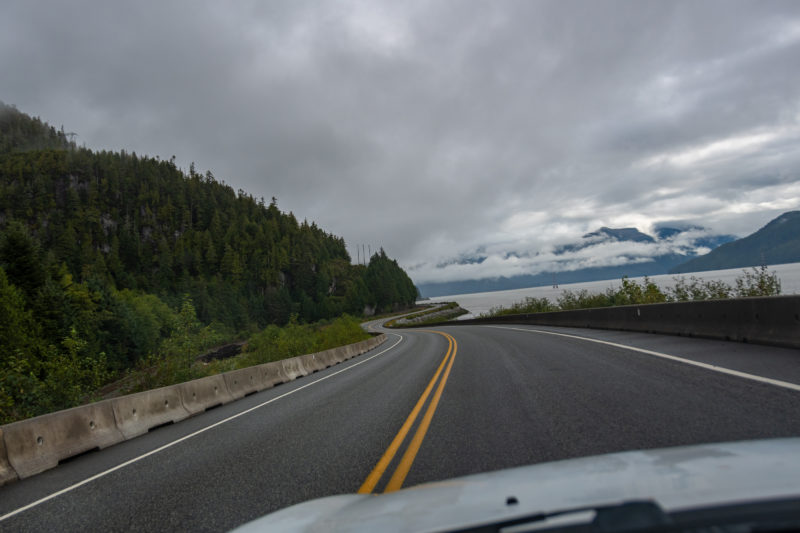
Since ancient times, the Skeena has been an important transportation artery, particularly for the Tsimshian and the Gitxsan—whose names mean “inside the Skeena River” and “people of the Skeena River,” respectively. […] The Tsimshian migrated to the Lower Skeena River, and the Gitxsan occupy territory of the Upper Skeena.
Skeena River. Wikipedia.
The Skeena also served steamboat traffic in the gold rush. Like the Port Hardy harbor, the river valley was washed out in a dense fog and low cloud cover, but we also saw the beginnings of fall color. I did not realize the start of September would be fall up here, but all the signs for “must use snow tires and carry chains” regulations activate on October 1.
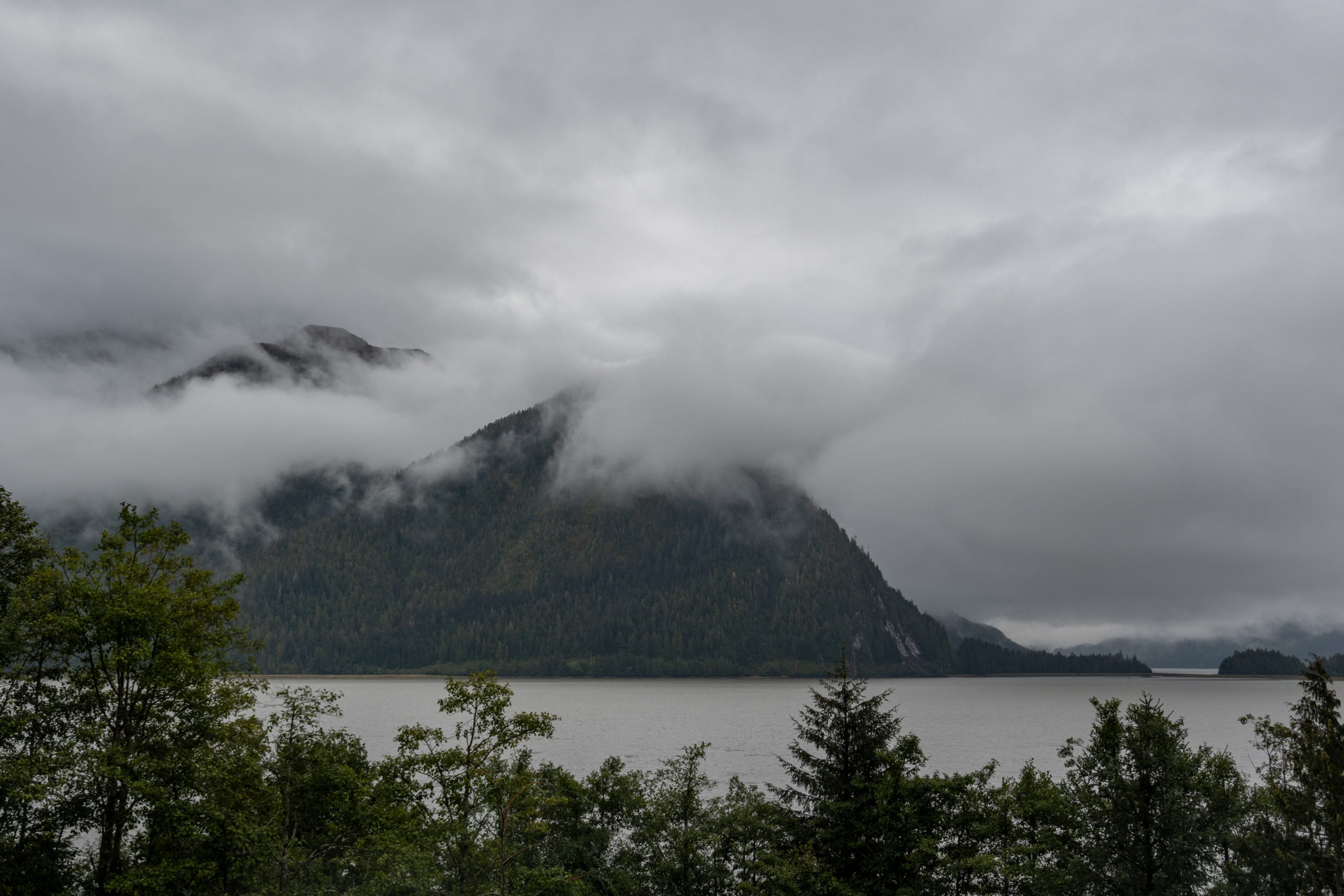
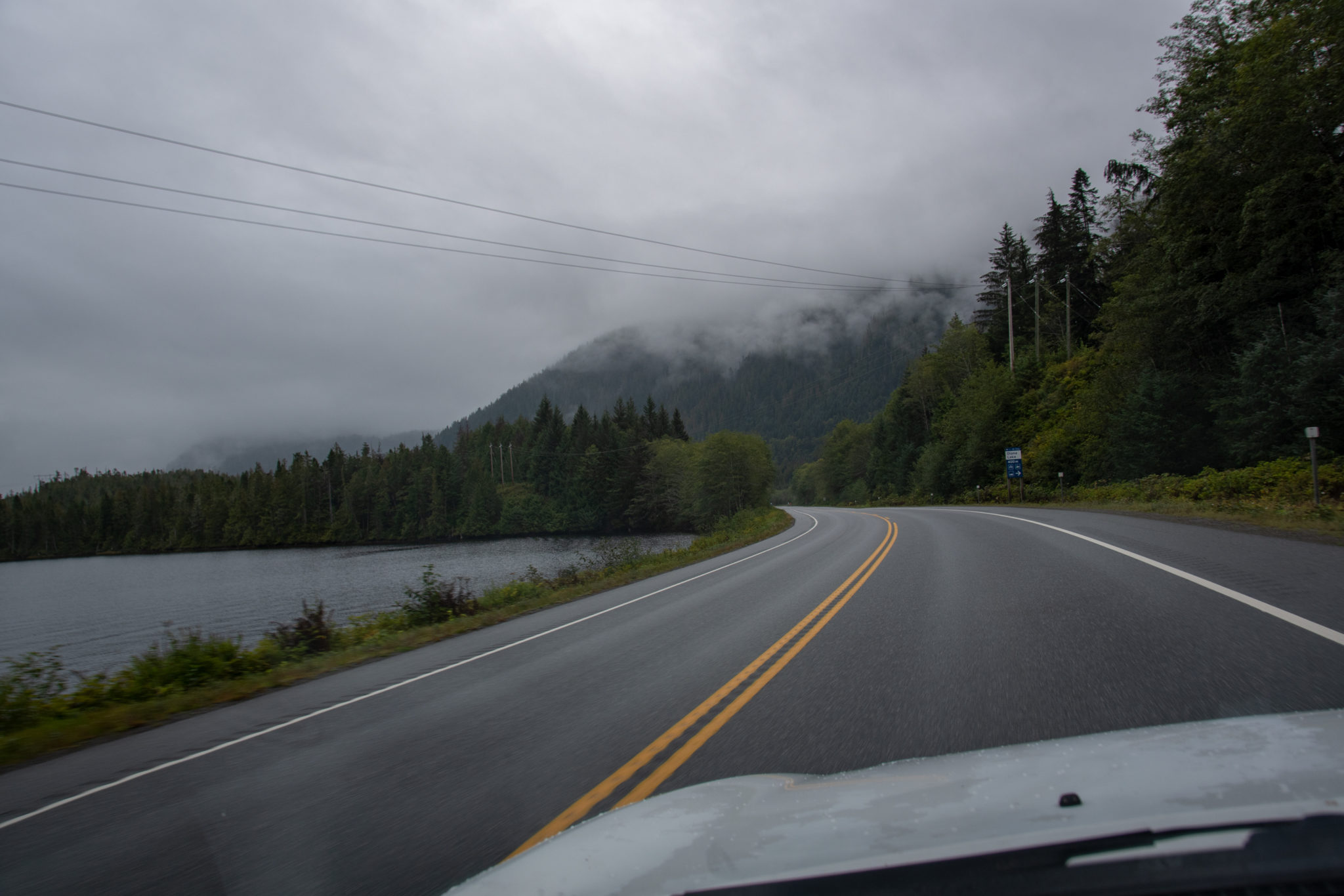
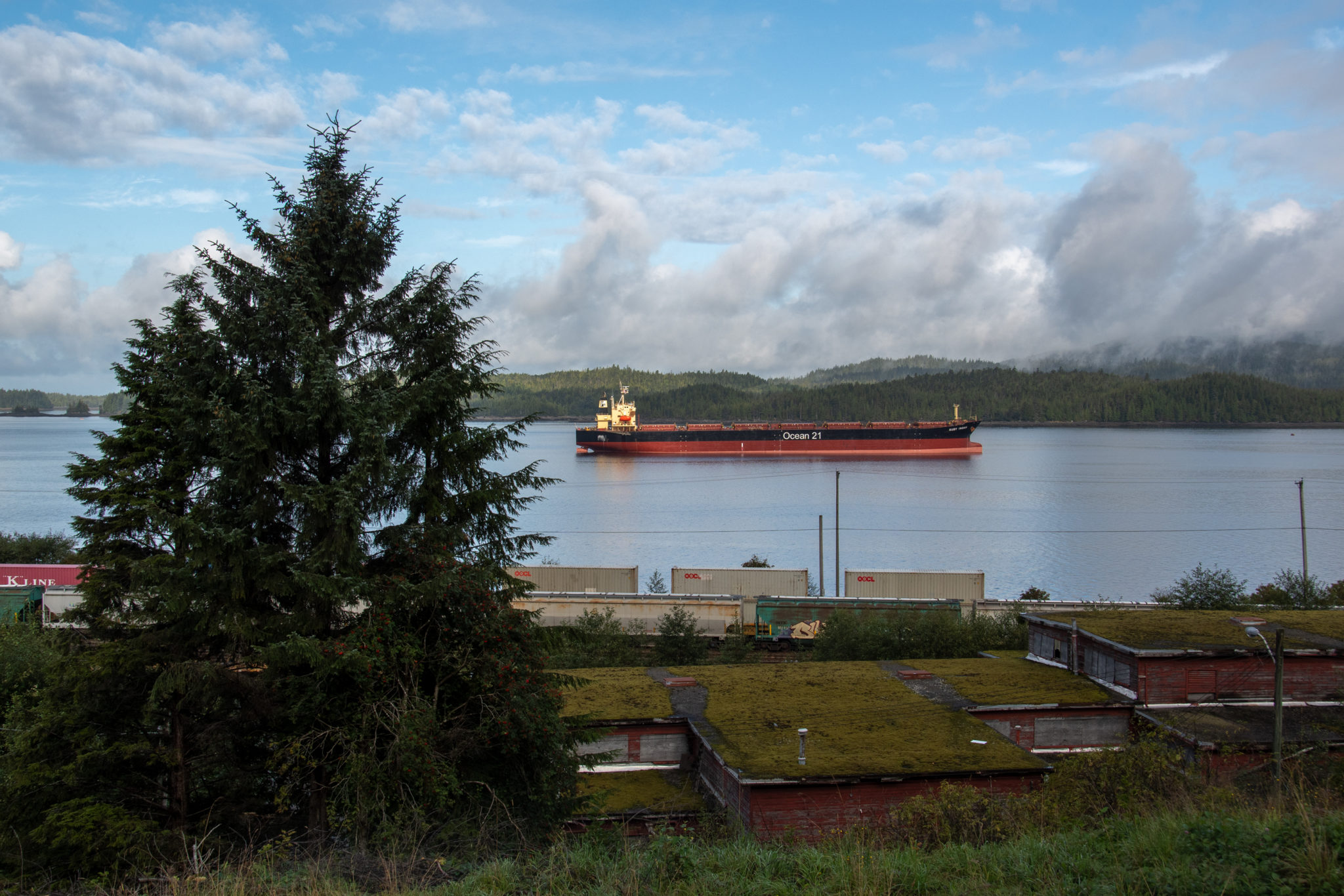
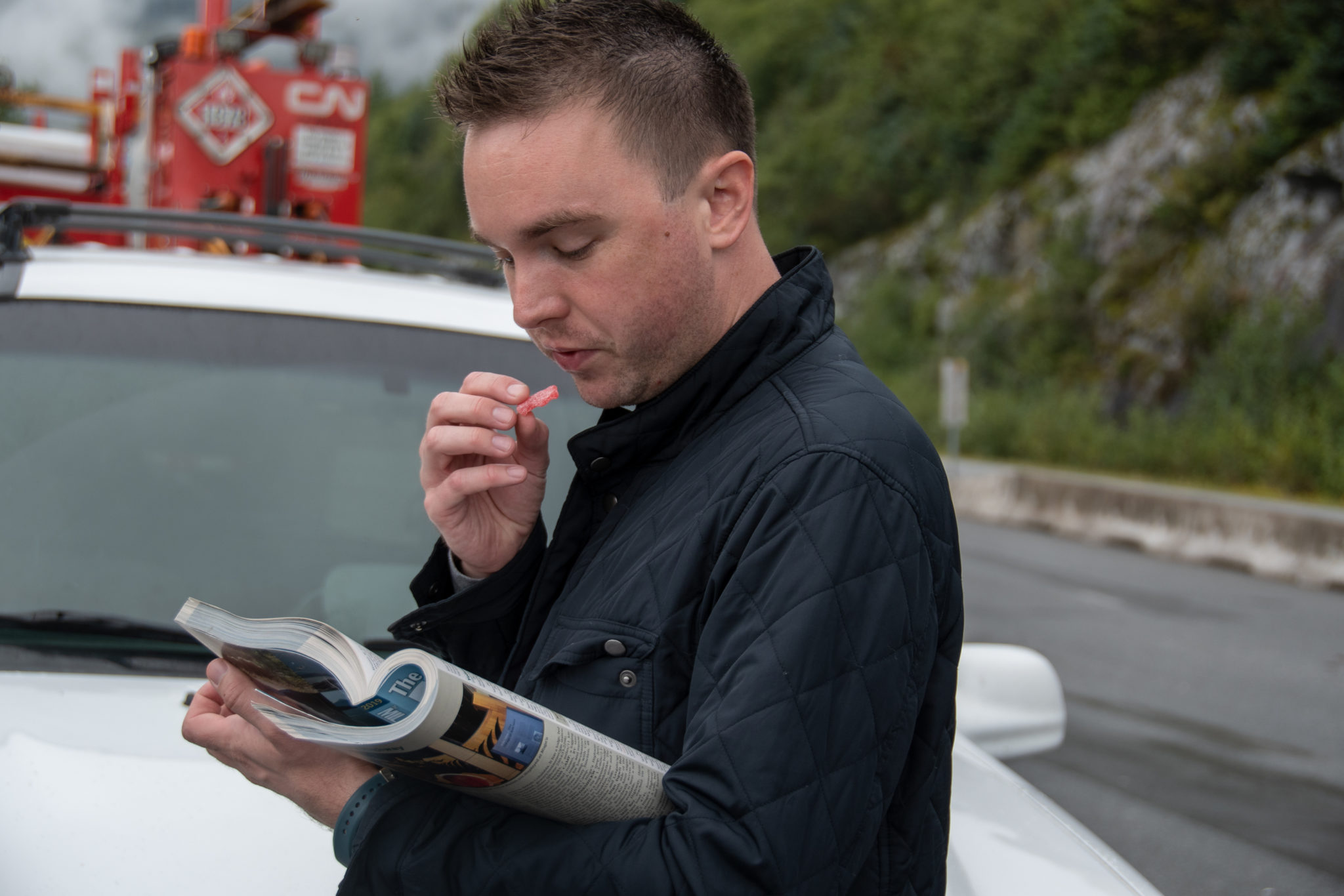
We stopped about two hours into today’s drive in Terrace for lunch. Terrace is a logging and industrial town of about 18,000, the largest we’ll pass through for a while. Though several First Nations tribes have lived in Terrace for thousands of years, the establishment of the town is credited to a man named George Little:
Ontarian George Little arrived in the Skeena River valley in March 1905. While travelling from the Yukon by snowshoe on the Kitimat trail en route to the Bulkley Valley, he liked what he saw in the area, decided to remain, and staked claim later in the year to many acres of what would later be Terrace
The riverboats operated on the Skeena for only 22 years; the last boat, the Inlander, finished up in September 1912, when the Grand Trunk Pacific Railway took over its function. George Little donated 47 acres to the Grand Trunk Pacific Railway. The station stop was originally named “Littleton”; however, as there was already a Littleton in New Brunswick, Little changed the name to “Terrace” in reference to the local geography and the traditional Tsimshian name for the area. Little established a sawmill to accommodate the demand for railway ties. In 1955, Little rode the first CNR train to Kitimat, passing over the same route he had trekked one half century earlier.
Terrace. Wikipedia.
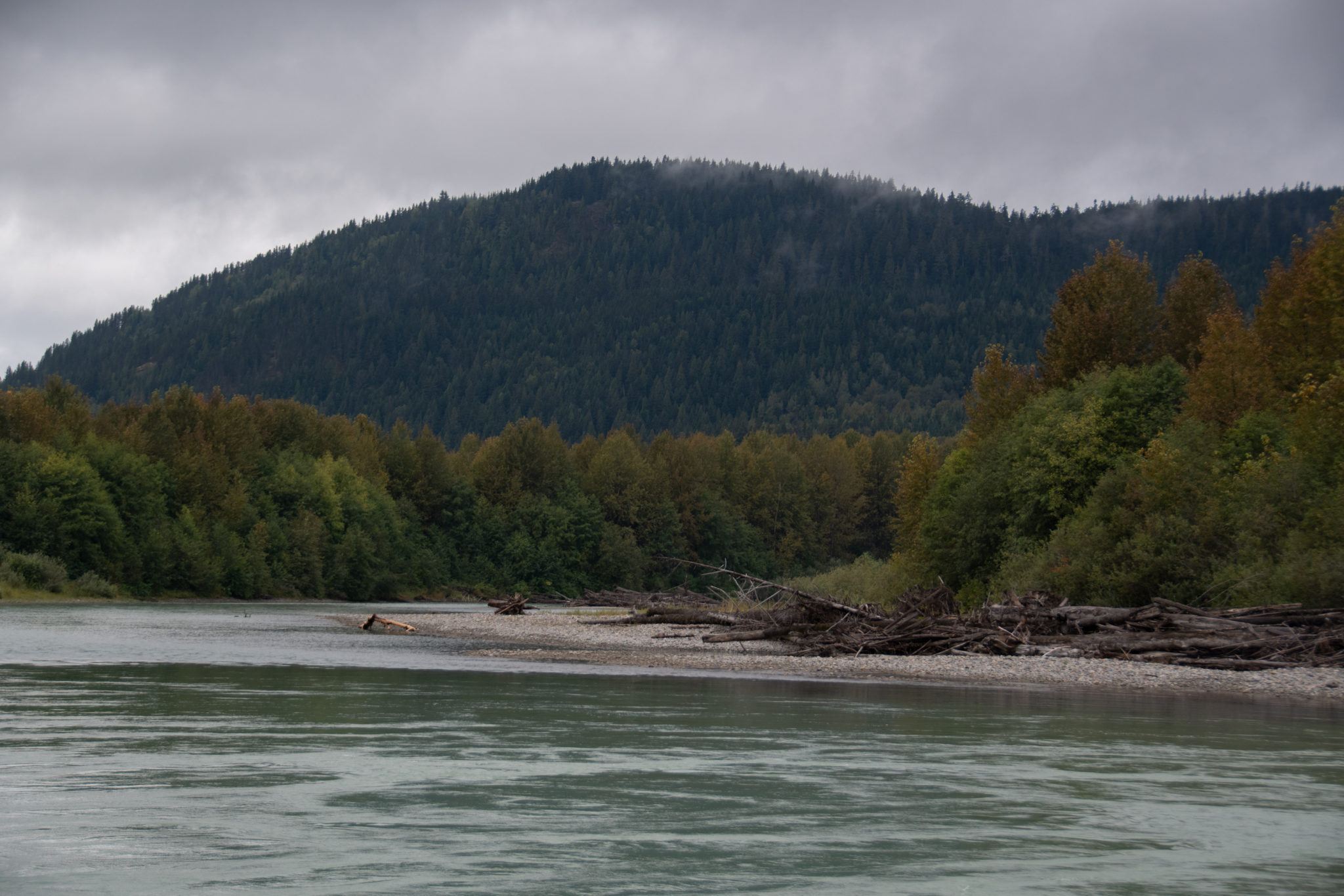
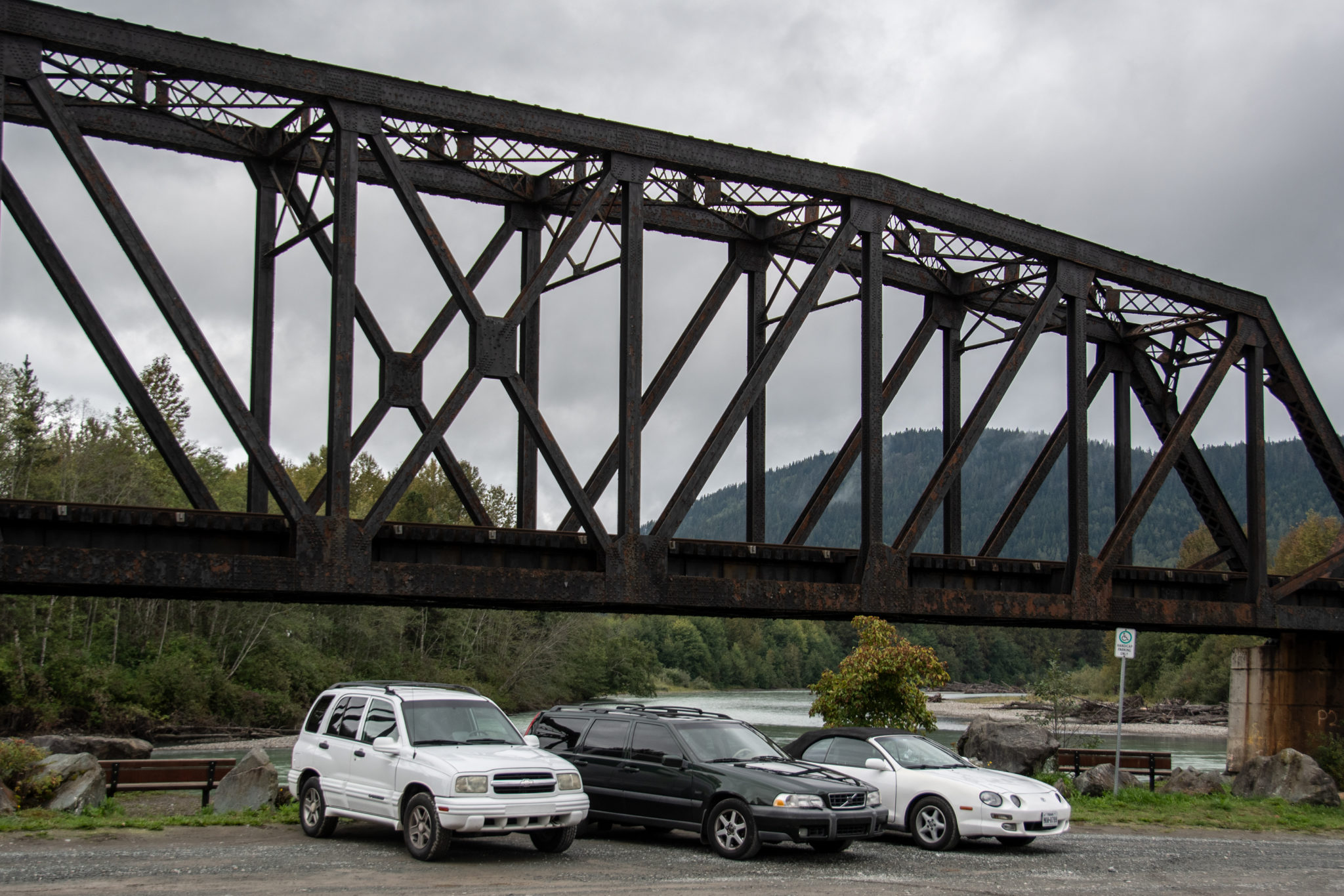
Looking for lunch in a town like this, we assumed we’d find… like… everyday Canadian food? Instead, aside from American chains like Denny’s, McDonald’s, and Pizza Hut, all the options were international. Indian, Chinese, Sushi, Korean, and (I kid you not) Mexican. Having high standards for the latter given our origins, we headed over to the Korean restaurant. Bulgogi sounded good.
On the way out, there was a house at the end of the street that I was curious about. Turns out, it’s George Little’s actual house — it was moved from its original location to the edge of the railroad to be the train station and Information/visitors center and gift shop. In talking to the proprietor, we learned that Little apparently died on the Titanic. Also, she told us that passenger service is only thrice weekly and always delayed because the line prioritizes freight now, launched into the biographies of the native artists who made the items she was selling, and gave us a card describing the mysterious Kermodei bear.
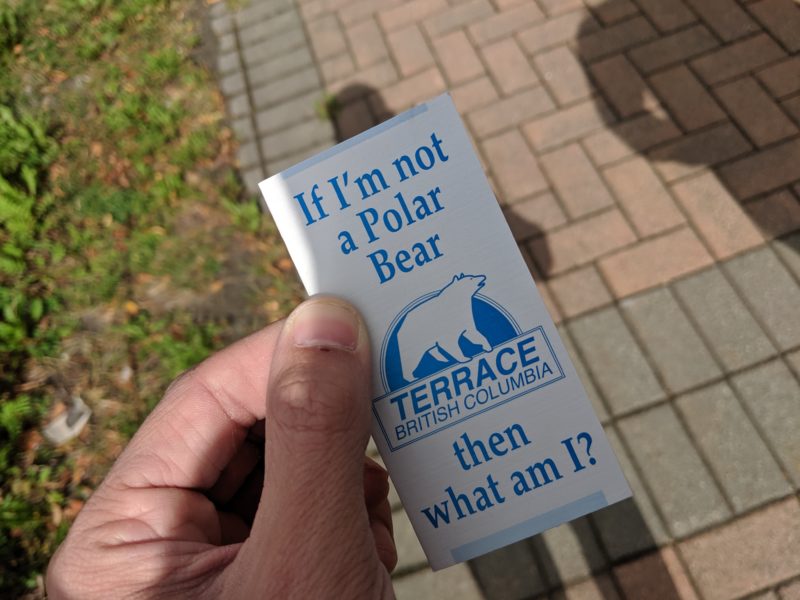
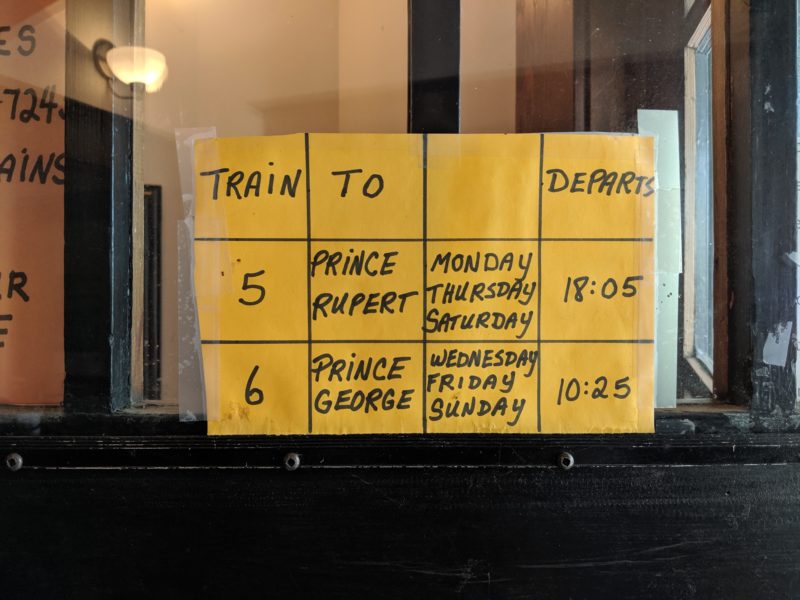
The Kermodei is an all-white offspring of a black bear. The coloring is a recessive gene among the black bear species; it is not an albino or polar bear. This actually came up on the ferry, too, as we passed Princess Royal Island where there’s a habitat for Kermodei bears but we couldn’t understand the ferry captain over the PA. All I heard was “not an albino bear” but that was enough to connect these stories.
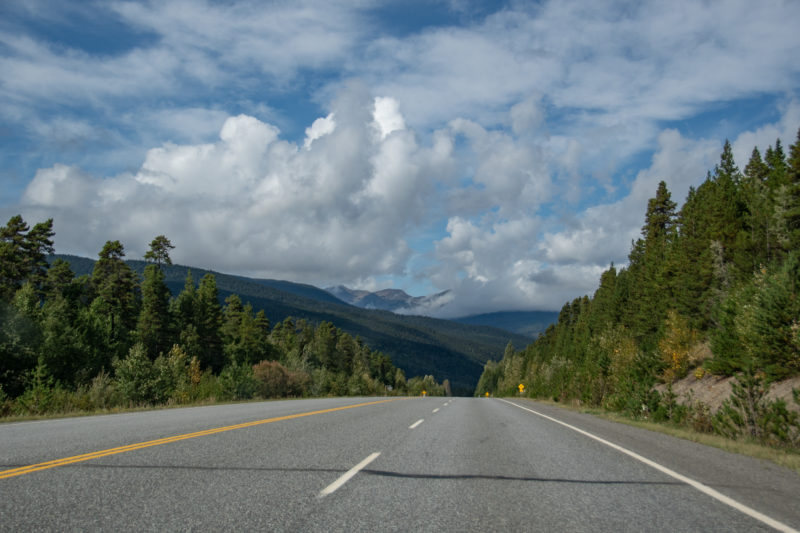
After our history and culture lesson, we got back on the road. At Kitwanga, we turned up the start of the Cassiar Highway.
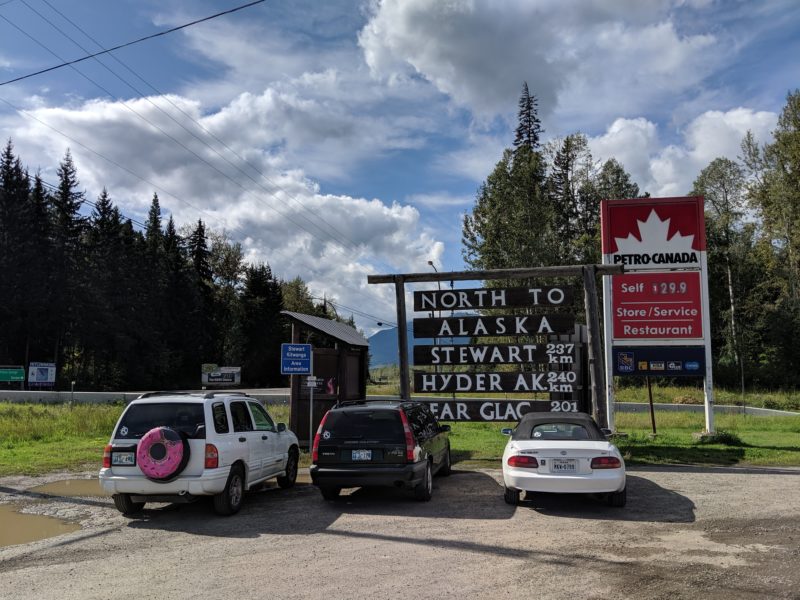
There were many warnings about how rough and remote this road would be, even the recommendation to bring two spare tires. Please. This is better maintained than most of the US Highways I took to get here, and I took a lot of them. In fairness, this is the “newer” half of this road; it originally only connected the mining town of Cassiar to the AlCan Highway to the north — maybe it gets worse. The route weaved along the Nass River through a logging forest, with mountains in the distance in all directions.
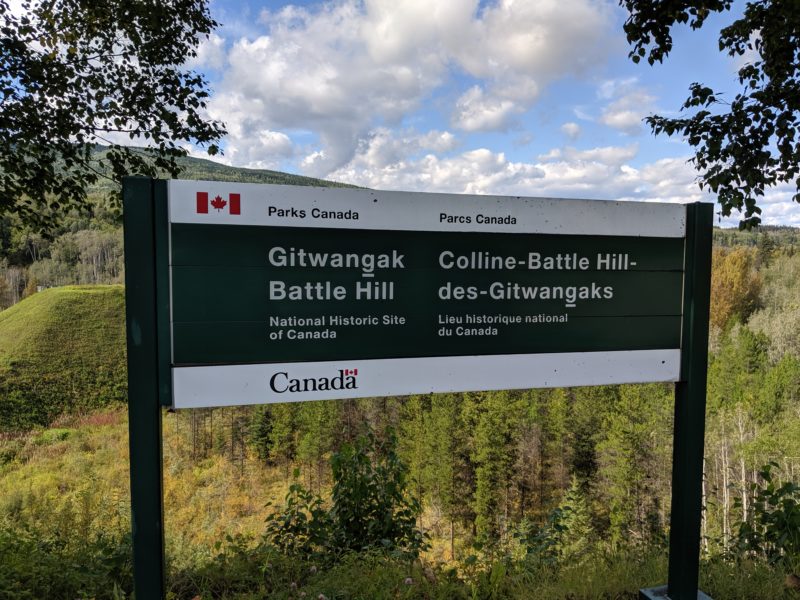
We stopped at the Gitwangak Battle Hill historic sight that George found in the guidebook. The hilltop had a magnificent view of the Seven Sisters mountain formation and snow-capped peaks in all directions, with the river below.
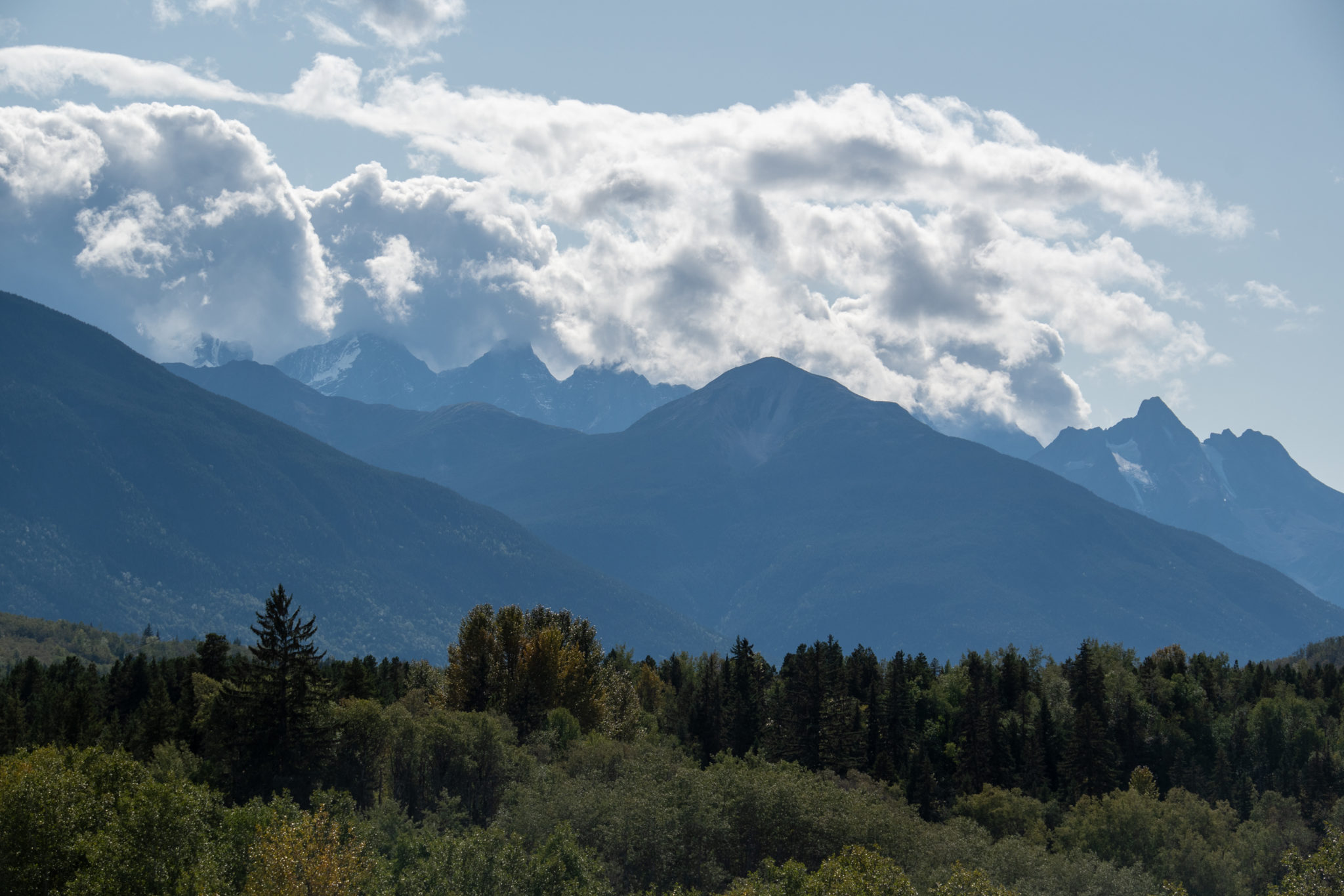
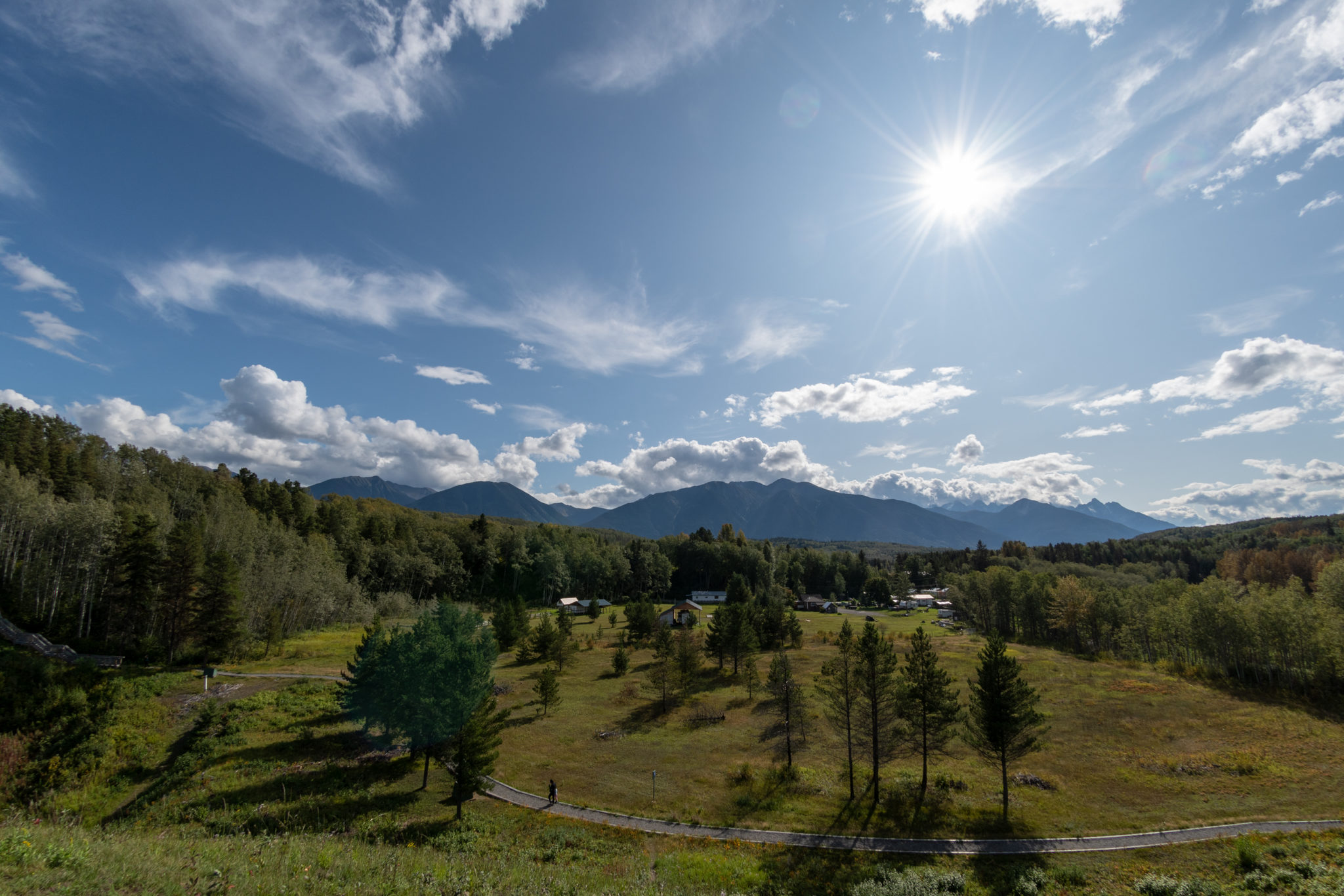
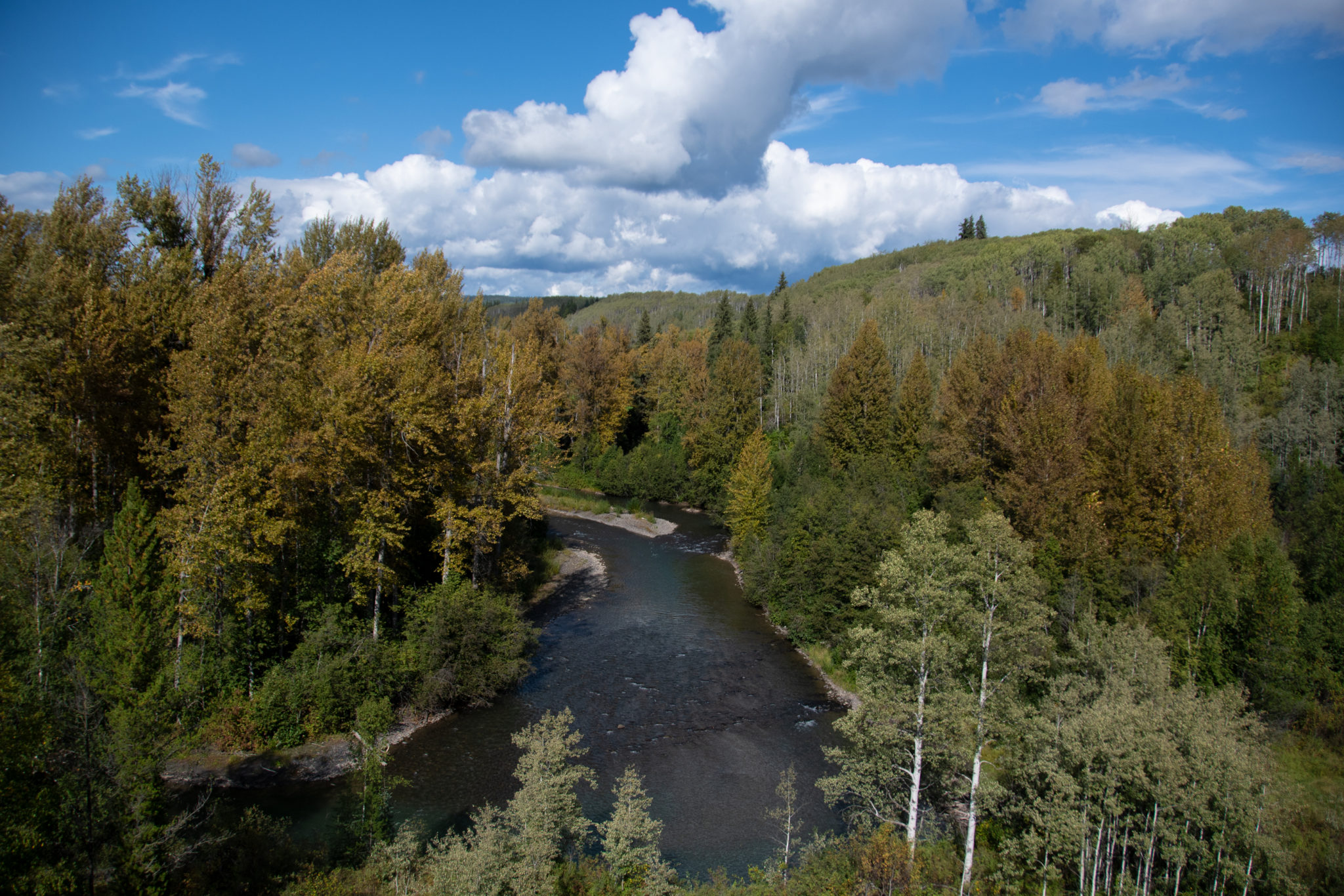
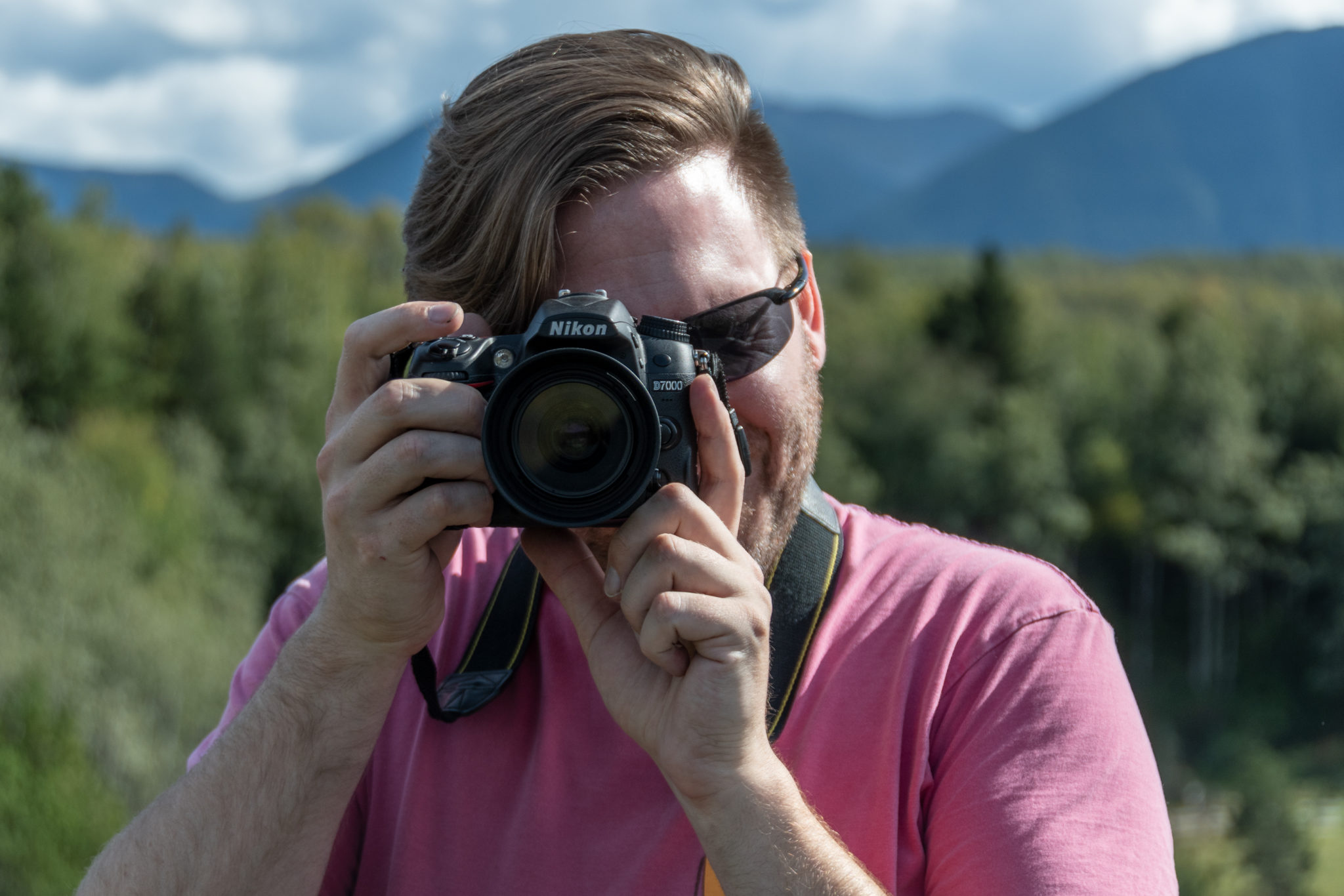
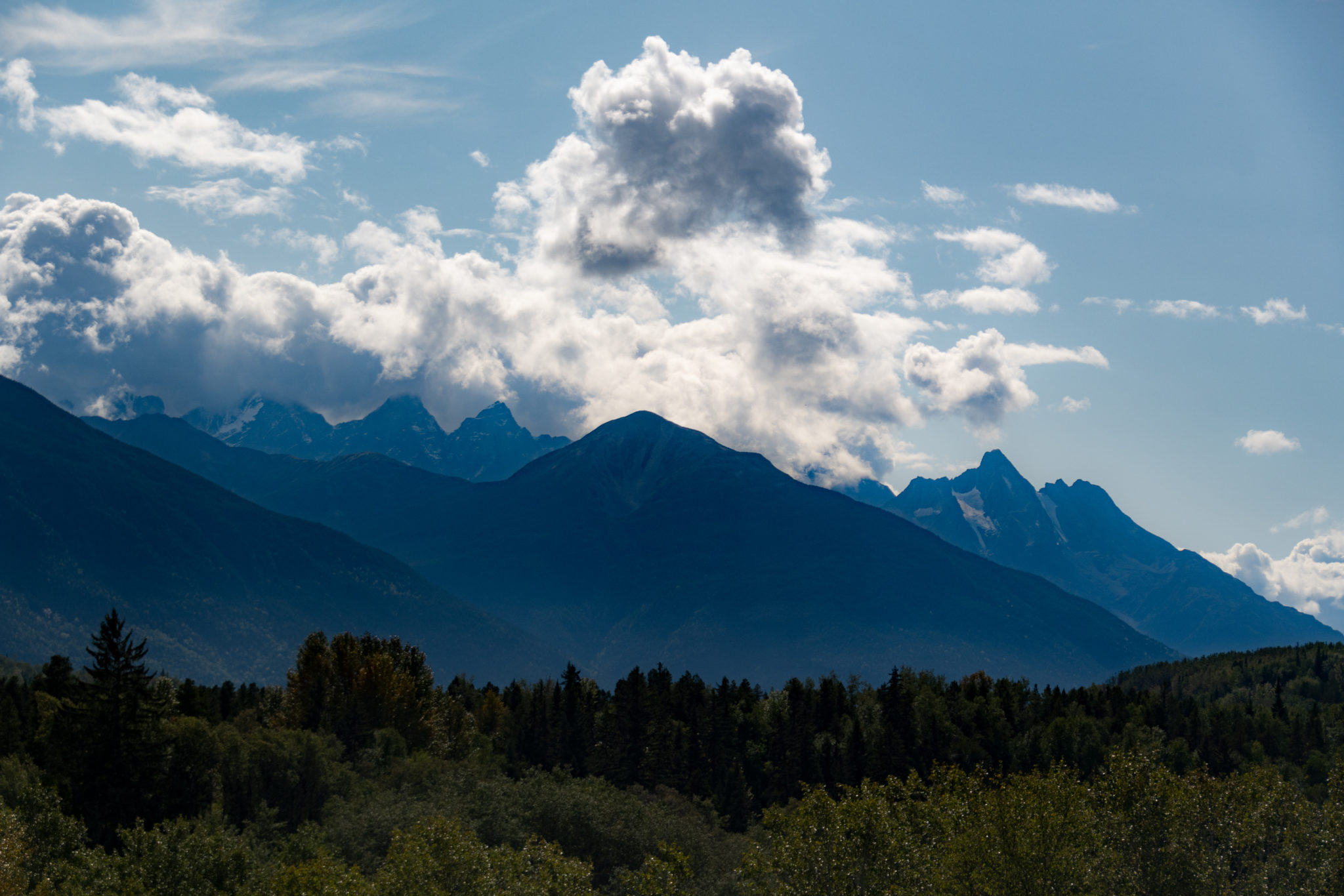
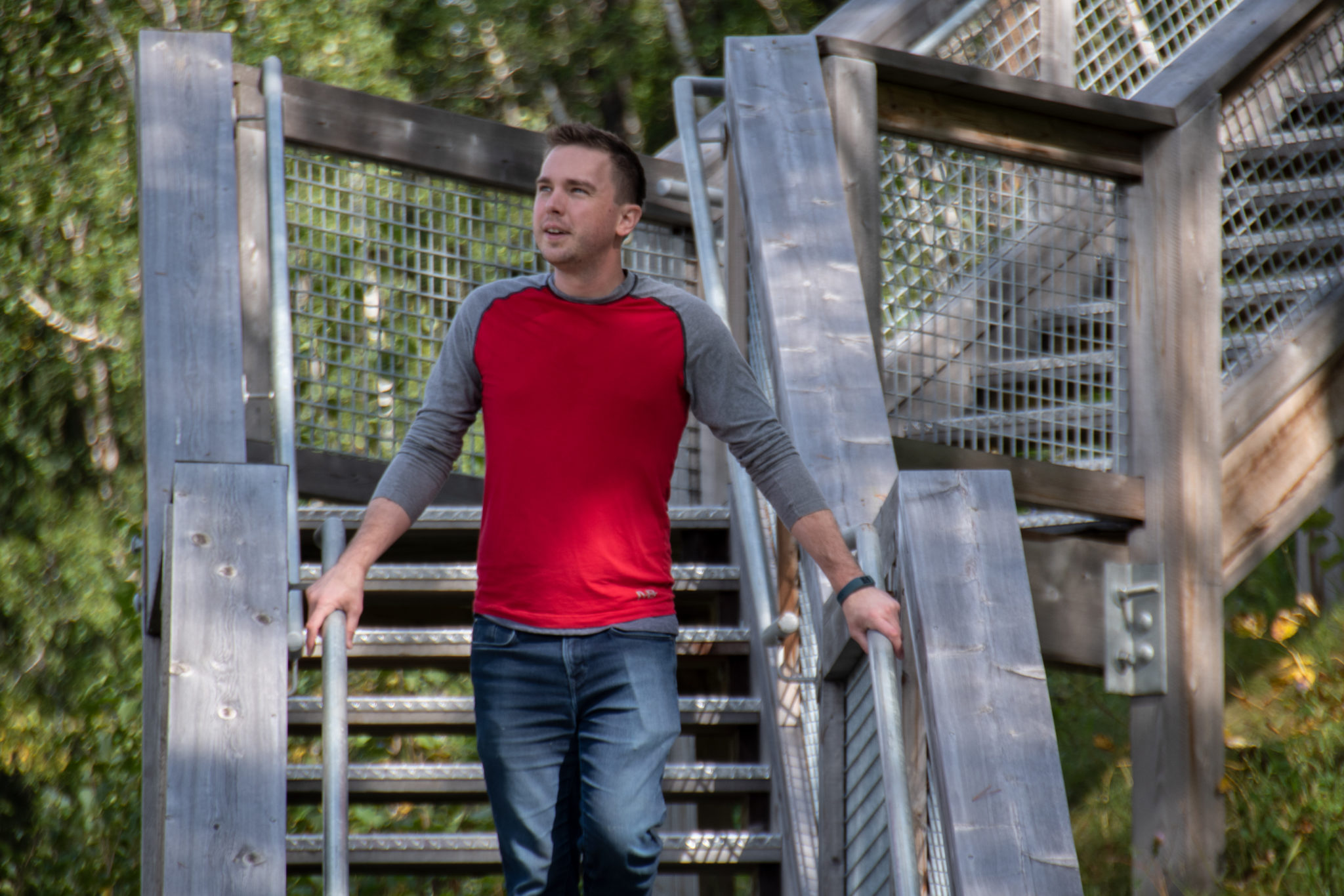
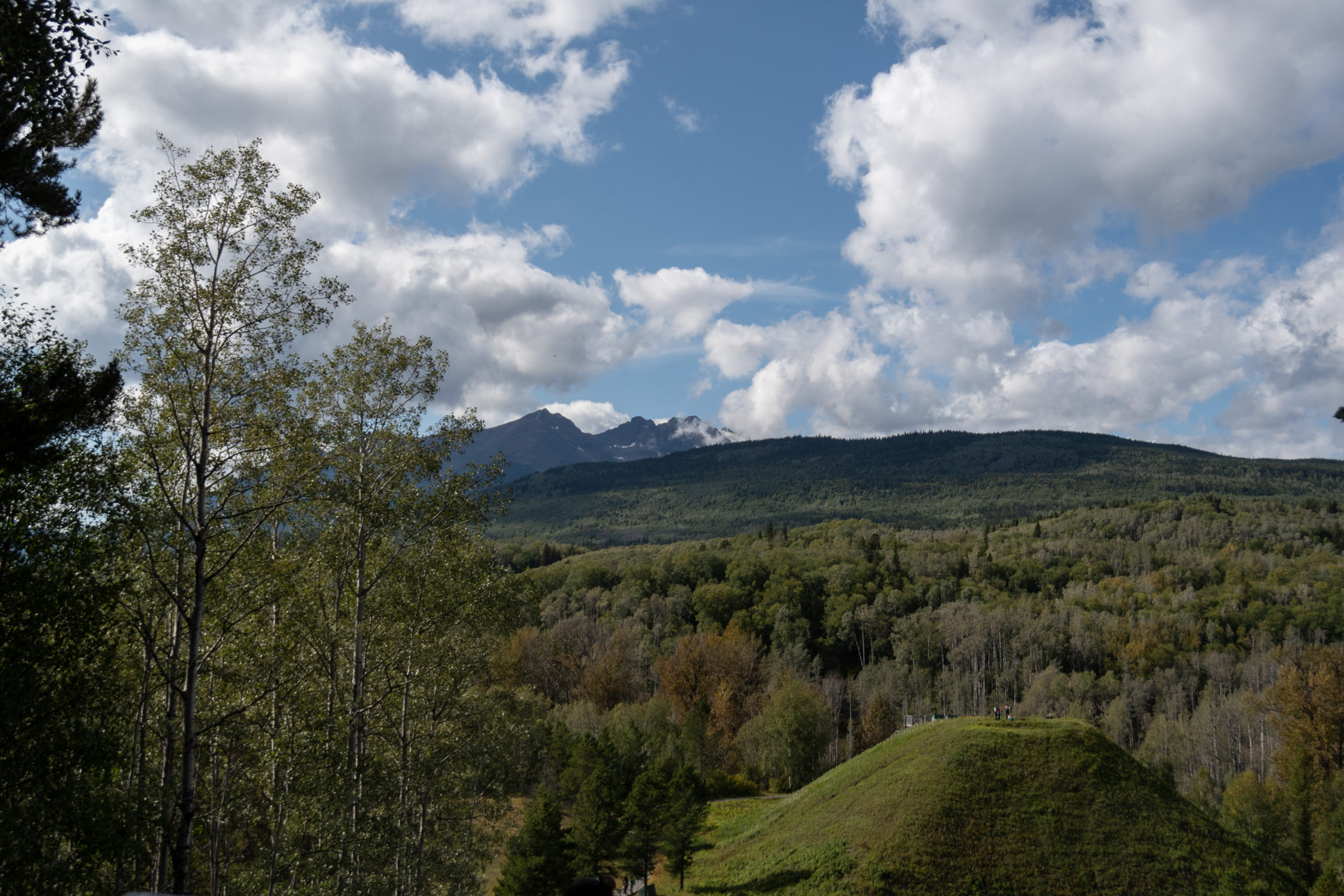
The hill was originally an encampment founded by the Gitwangak warrior chief ‘Nekt and was used as a stronghold. He and his tribe roped downed cedar trees with the branches cut short but not cut off, which they could roll down the hill at attackers trying to come up as a primary defense. His whole biography was split among the plaques leading up the hill, transcribed from an oral history in the 70s.
After Battle Hill, we made a quick stop at a nearby villiage famous for having an unusually dense collection of totem poles. …at a gas station…
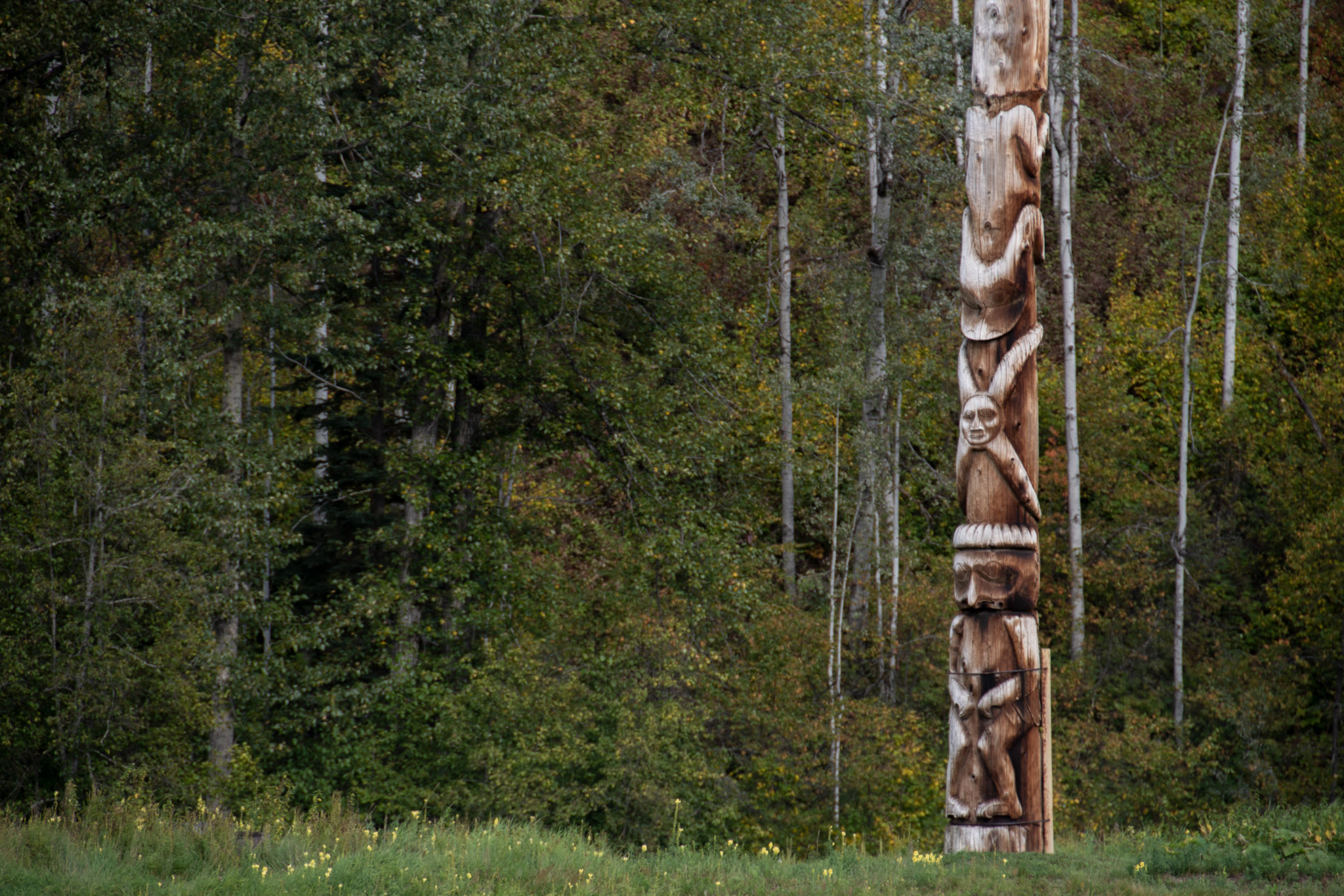
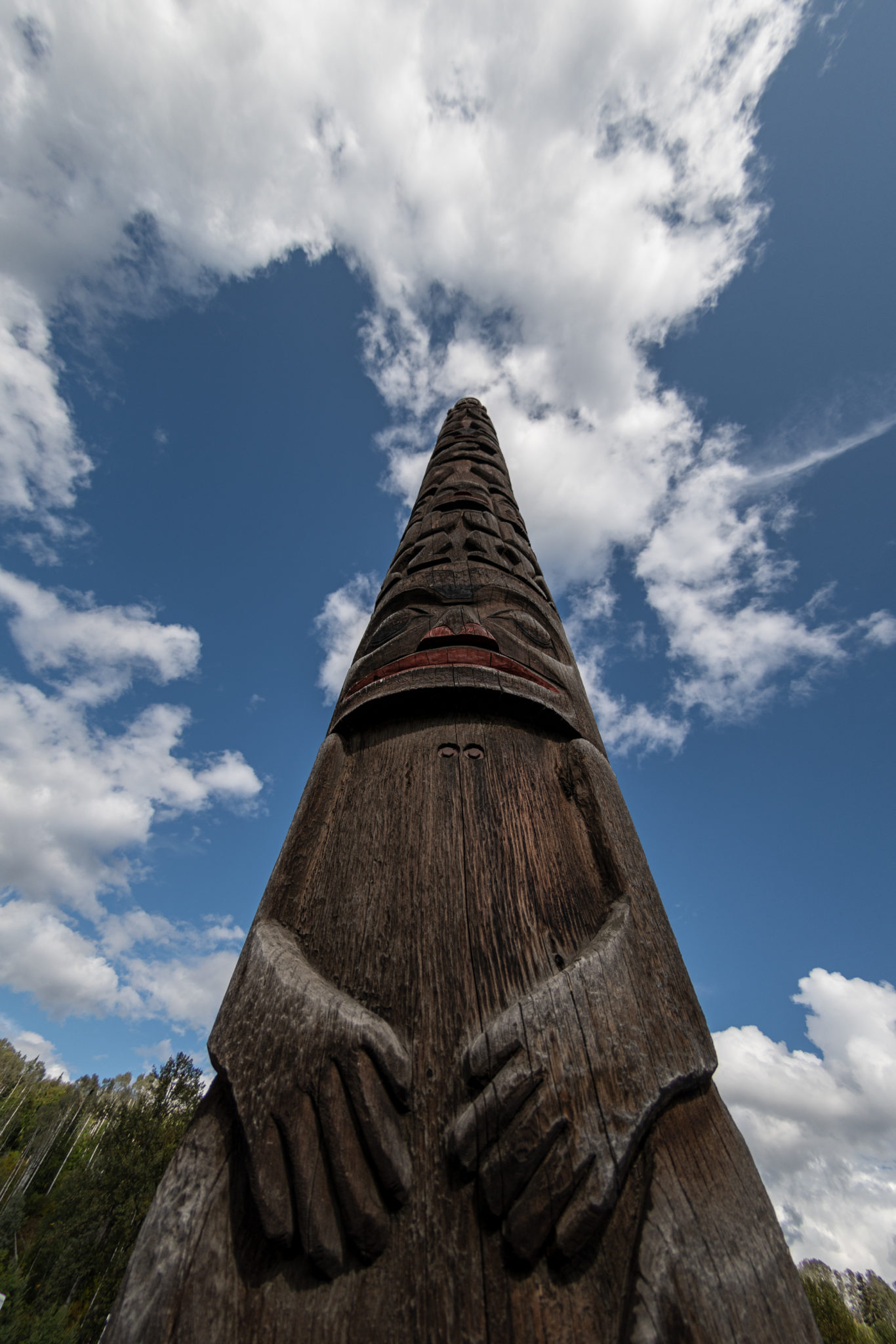
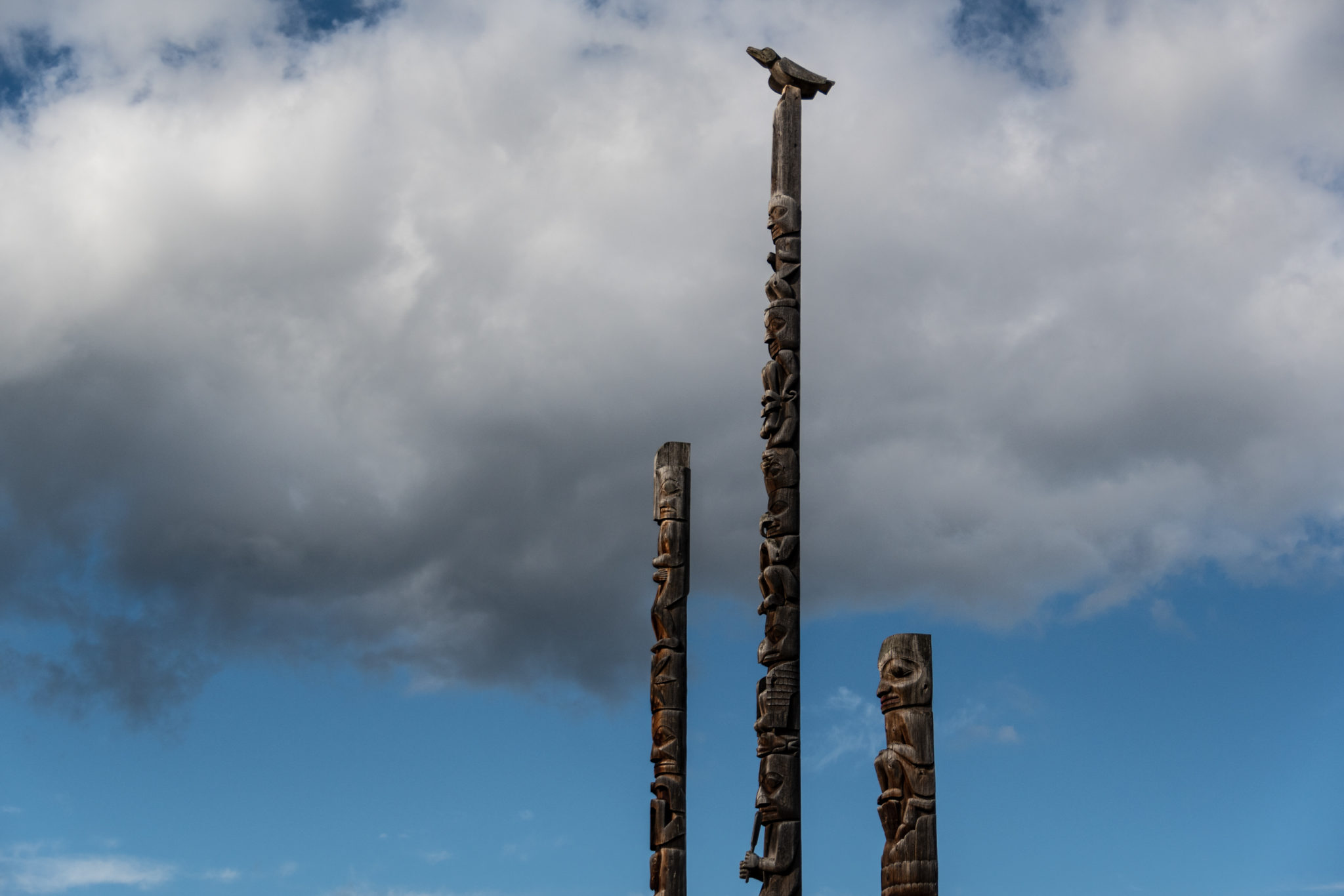
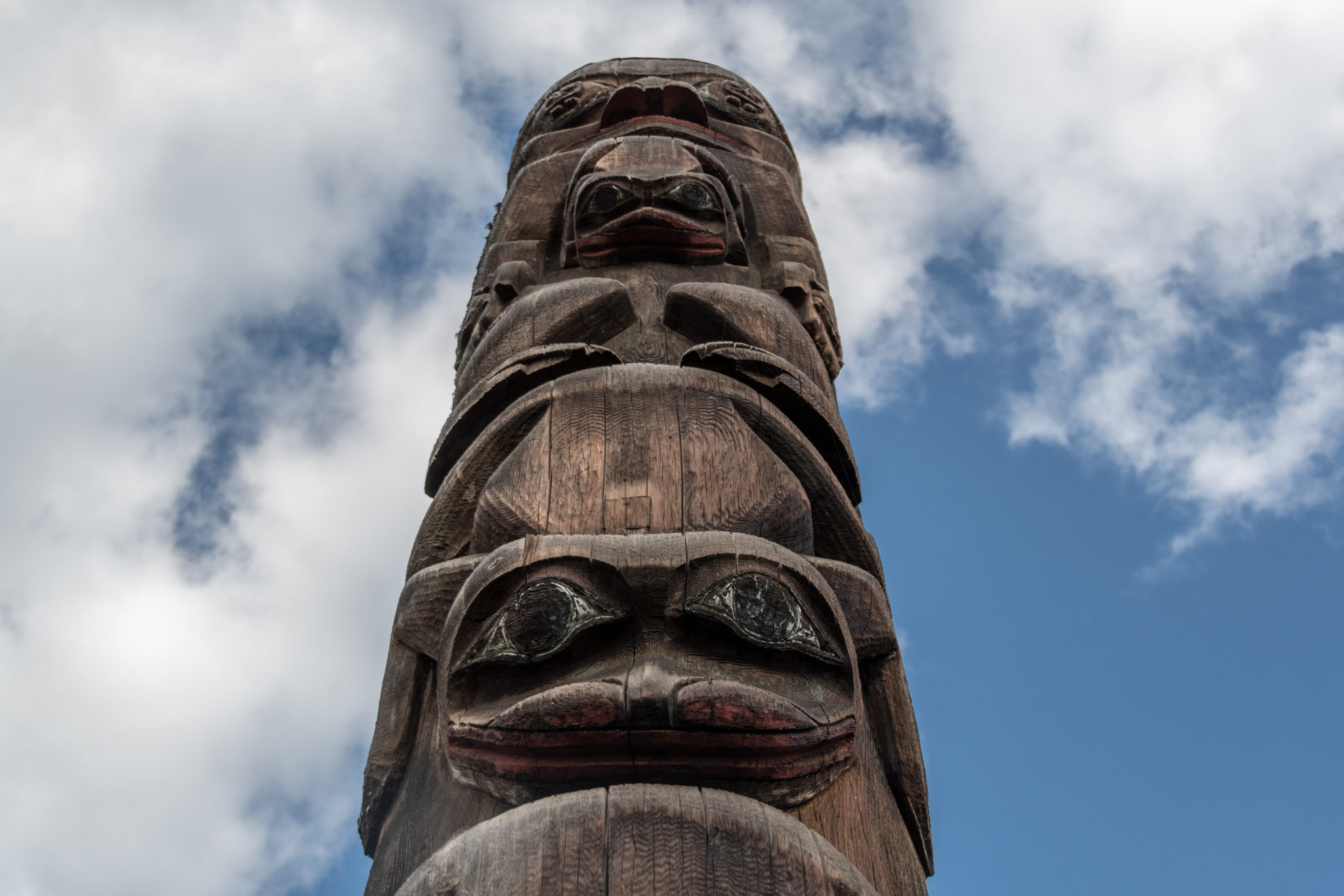
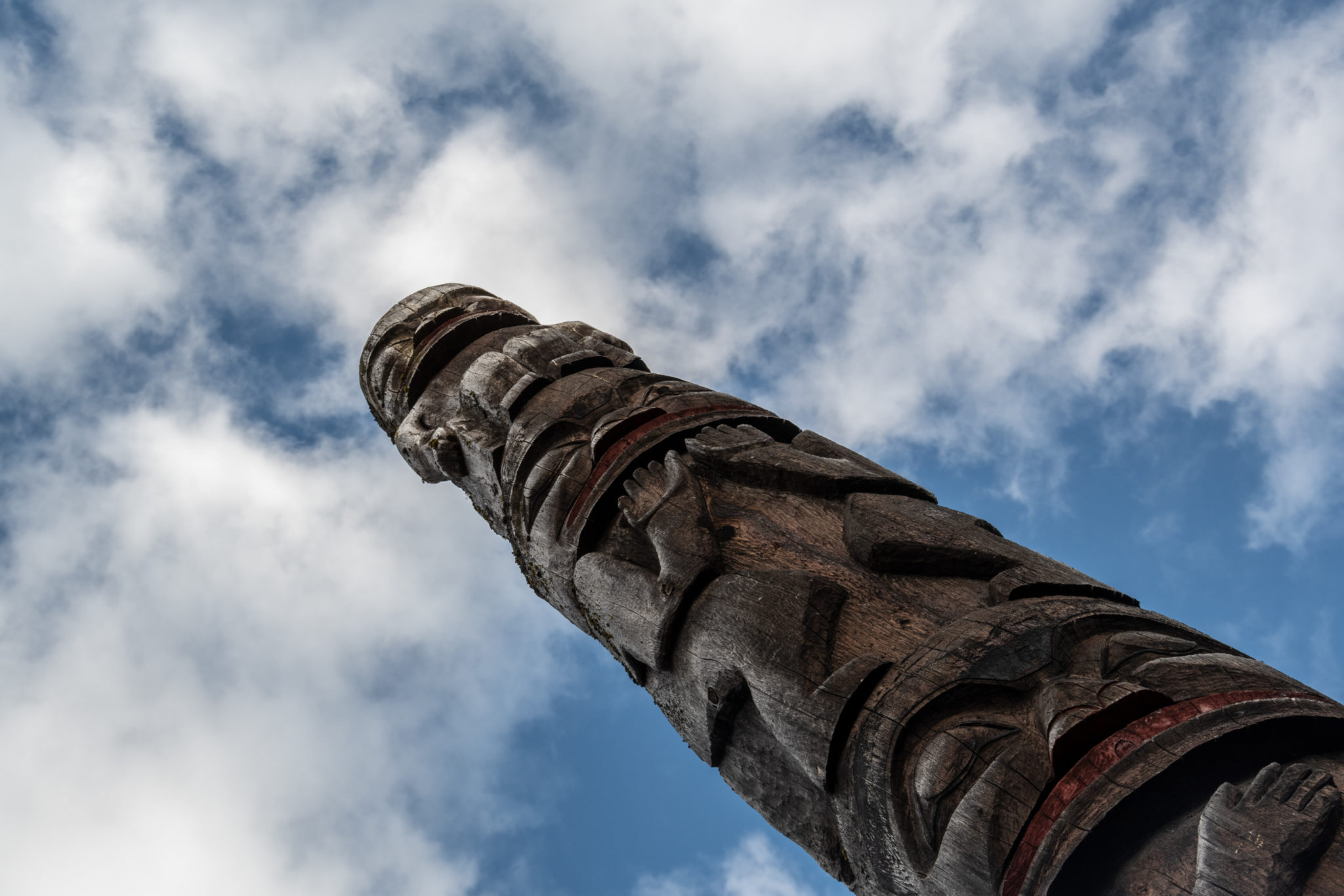
As we neared Stewart, we turned off briefly at Meziadin Lake’s picnic area for a snack. There were bears! (I’m in a ragtop… this may have been poor planning.)
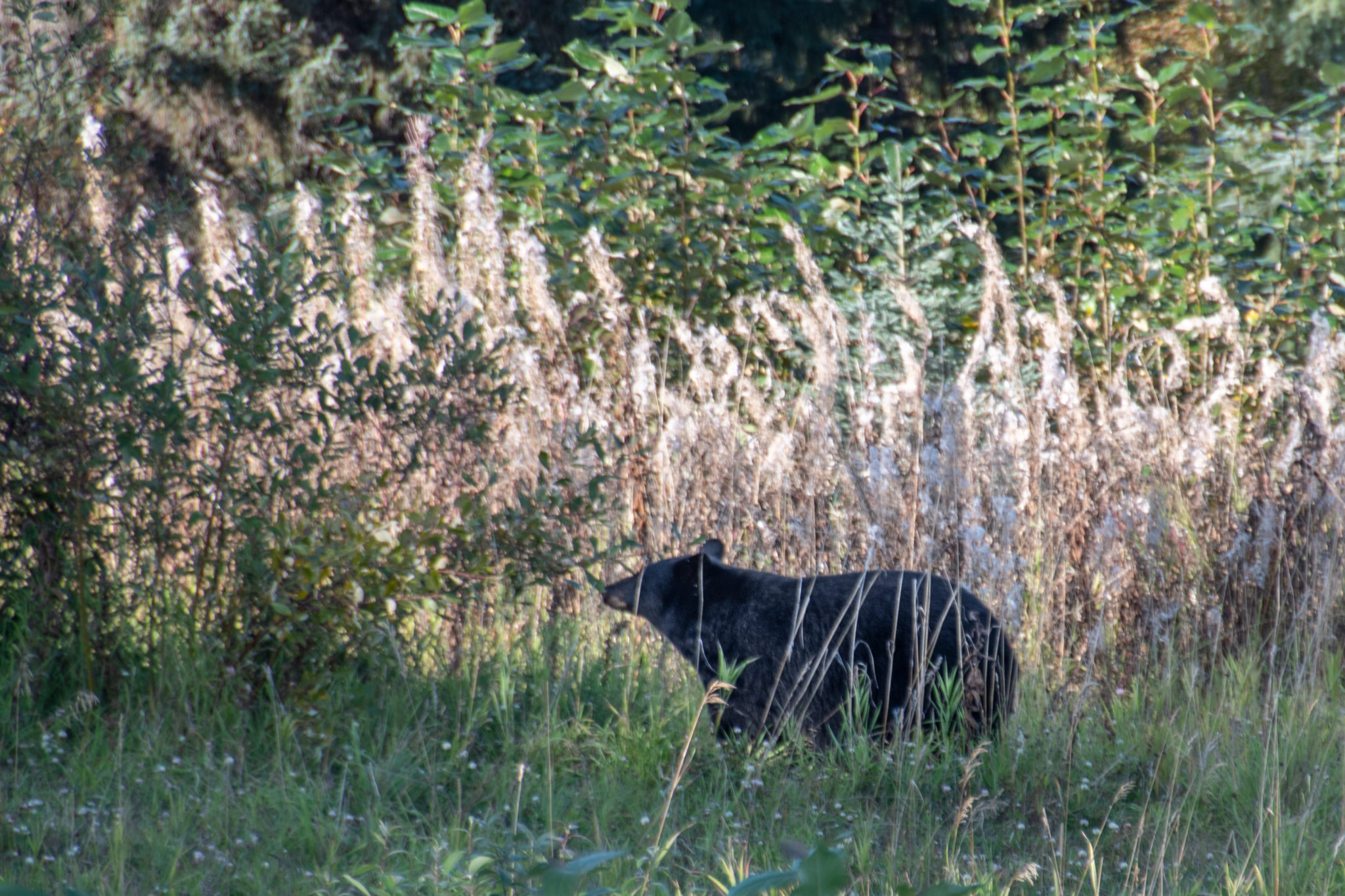
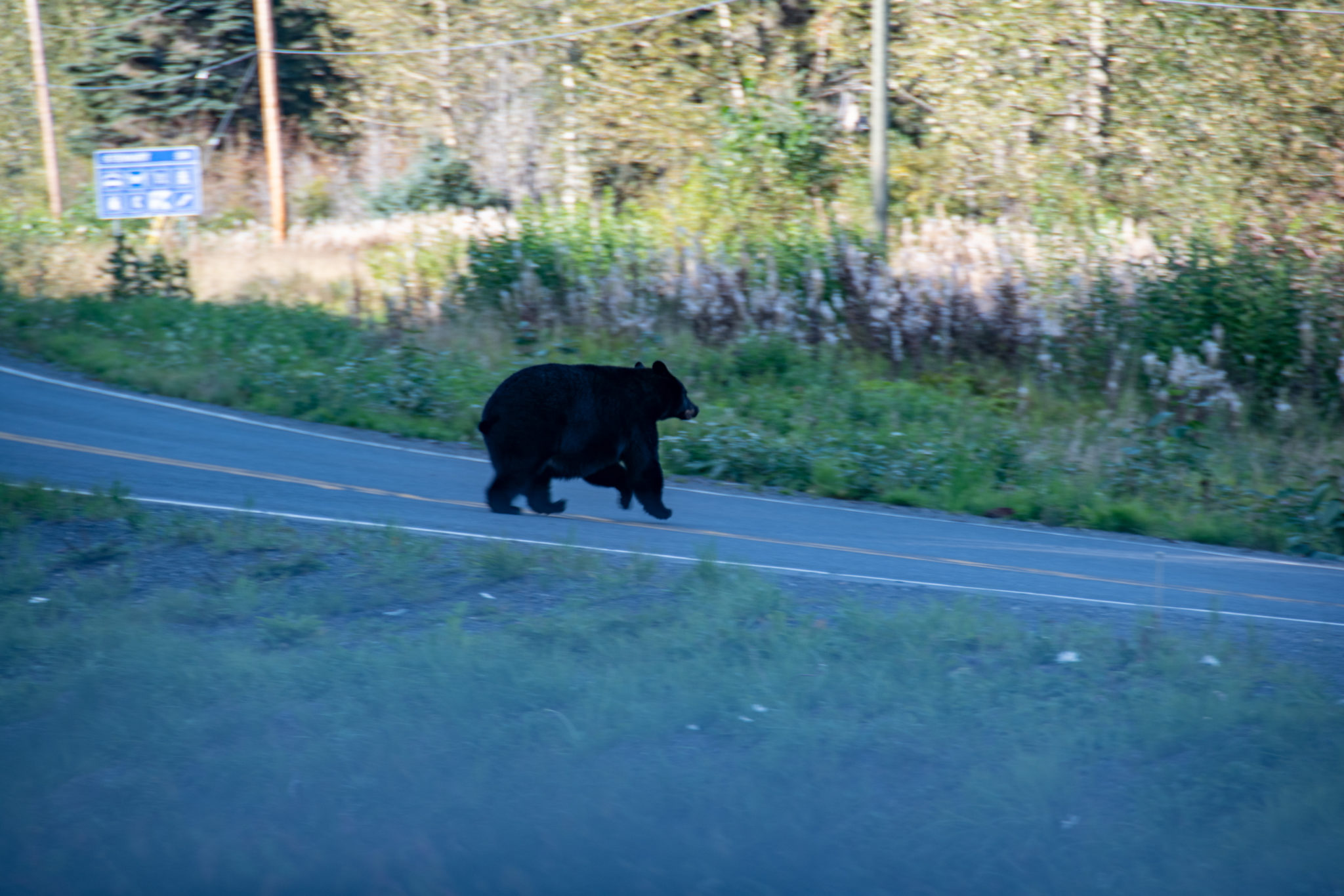
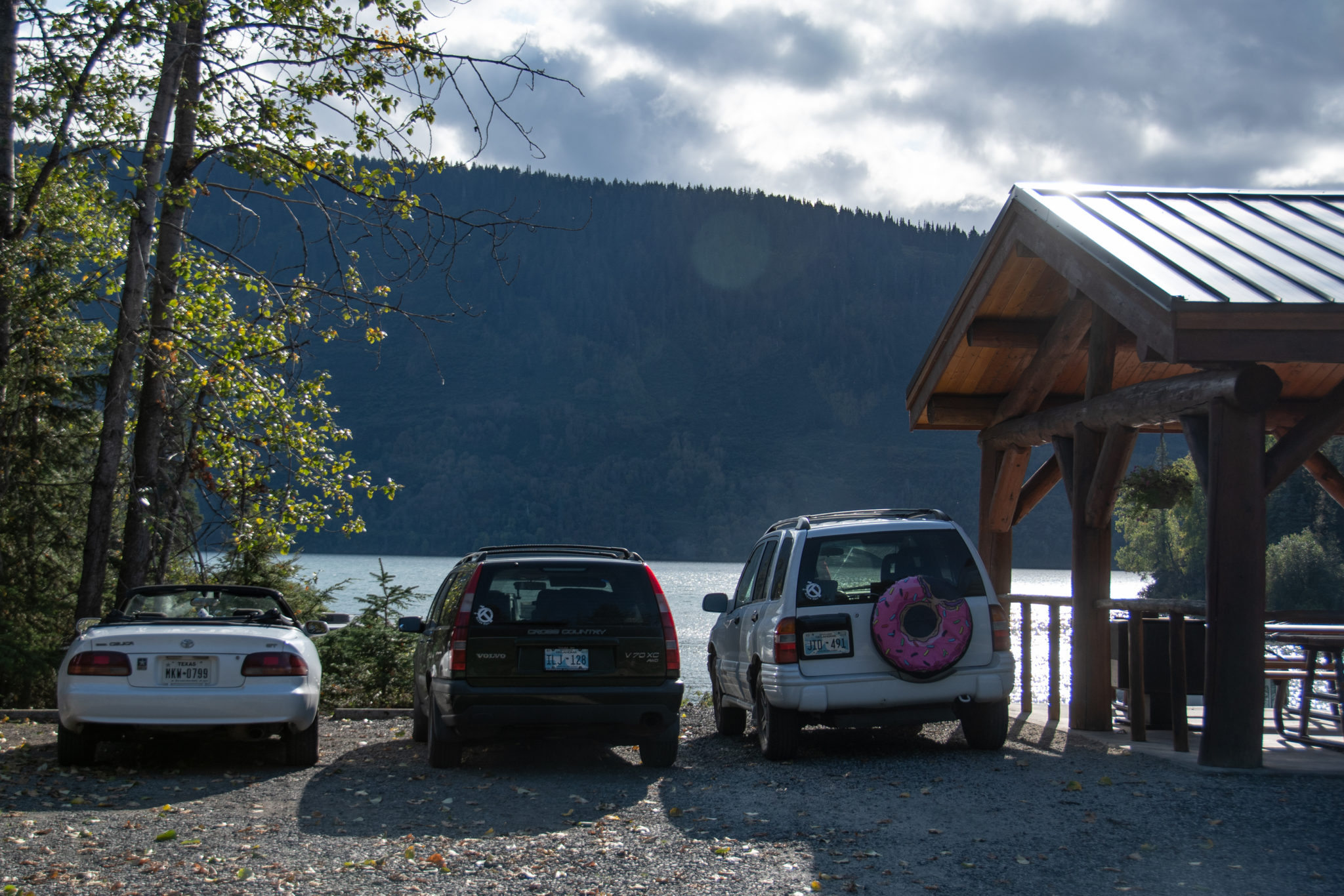
Our final stop on the way into Stewart was Bear Glacier. In the 90s, this glacier extended across what is now a lake, all the way to the roadway.
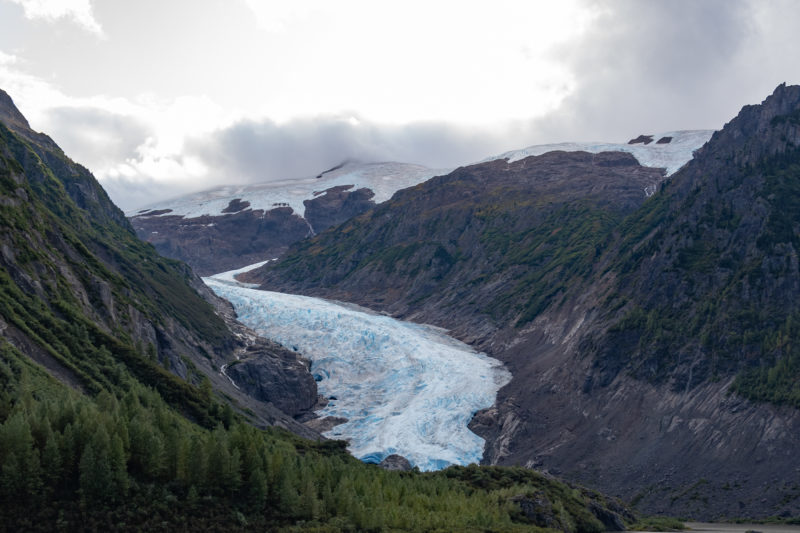
It was a fantastic but also sad sight because this pretty clearly won’t still be here in 10-20 years. The whole drive toward it was like entering Jurassic Park, the road (lined in avalanche warning signs) plunged into a valley lined with mountain peaks and glacial waterfalls in all directions. Obviously, I drove this with the roof down which made the other two catastrophically jealous, but I will privately admit that it was rather cold… #worthit.
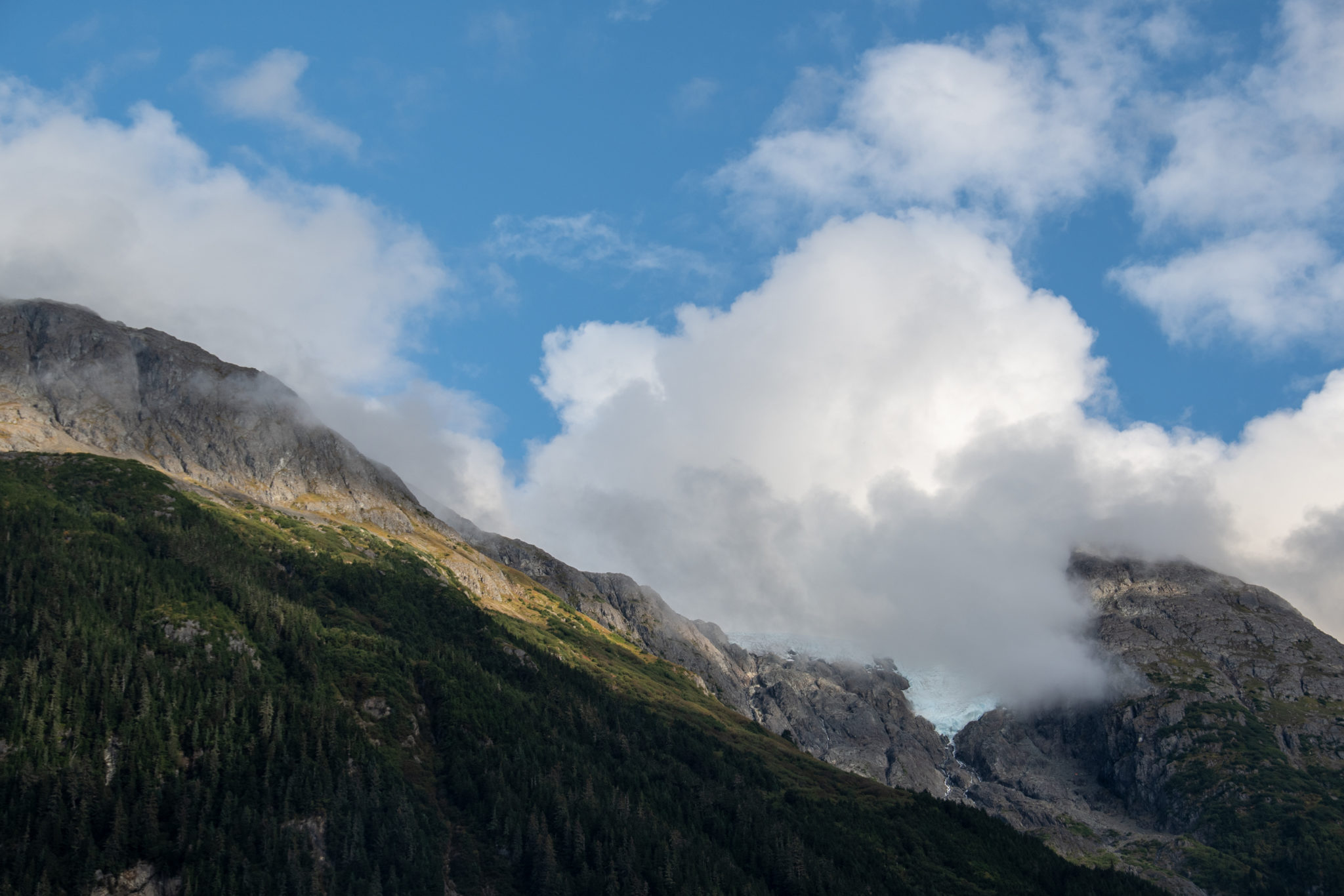
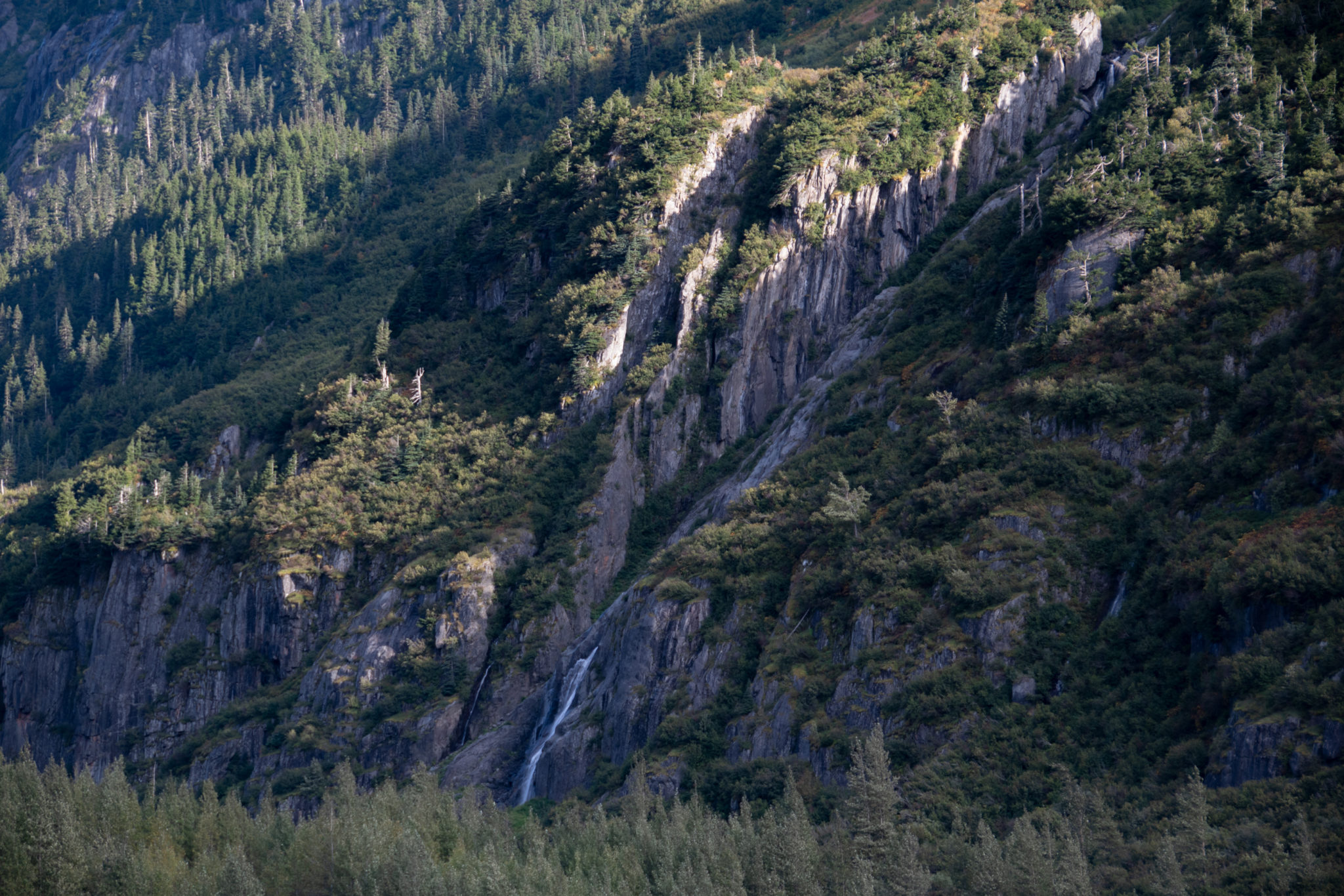
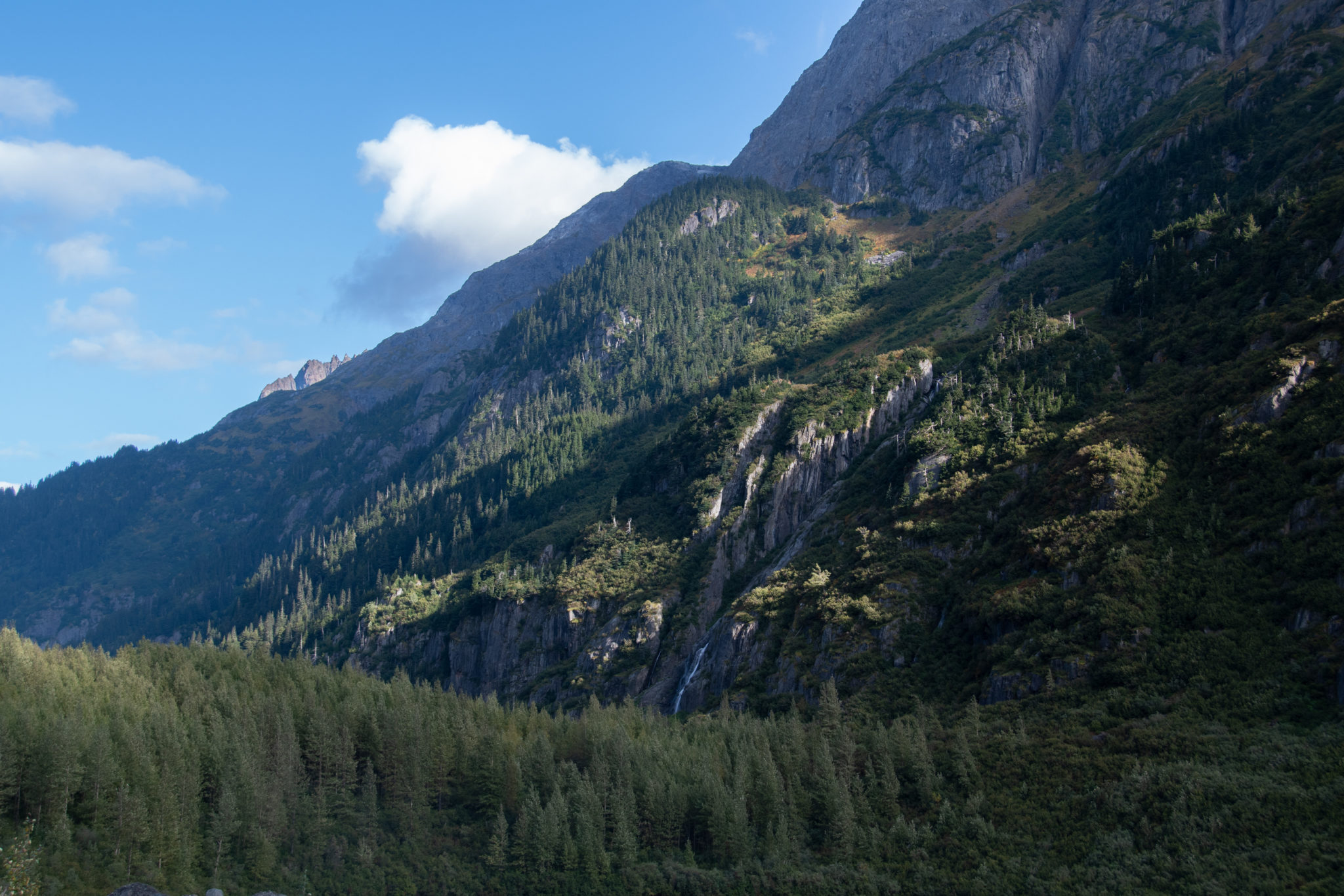
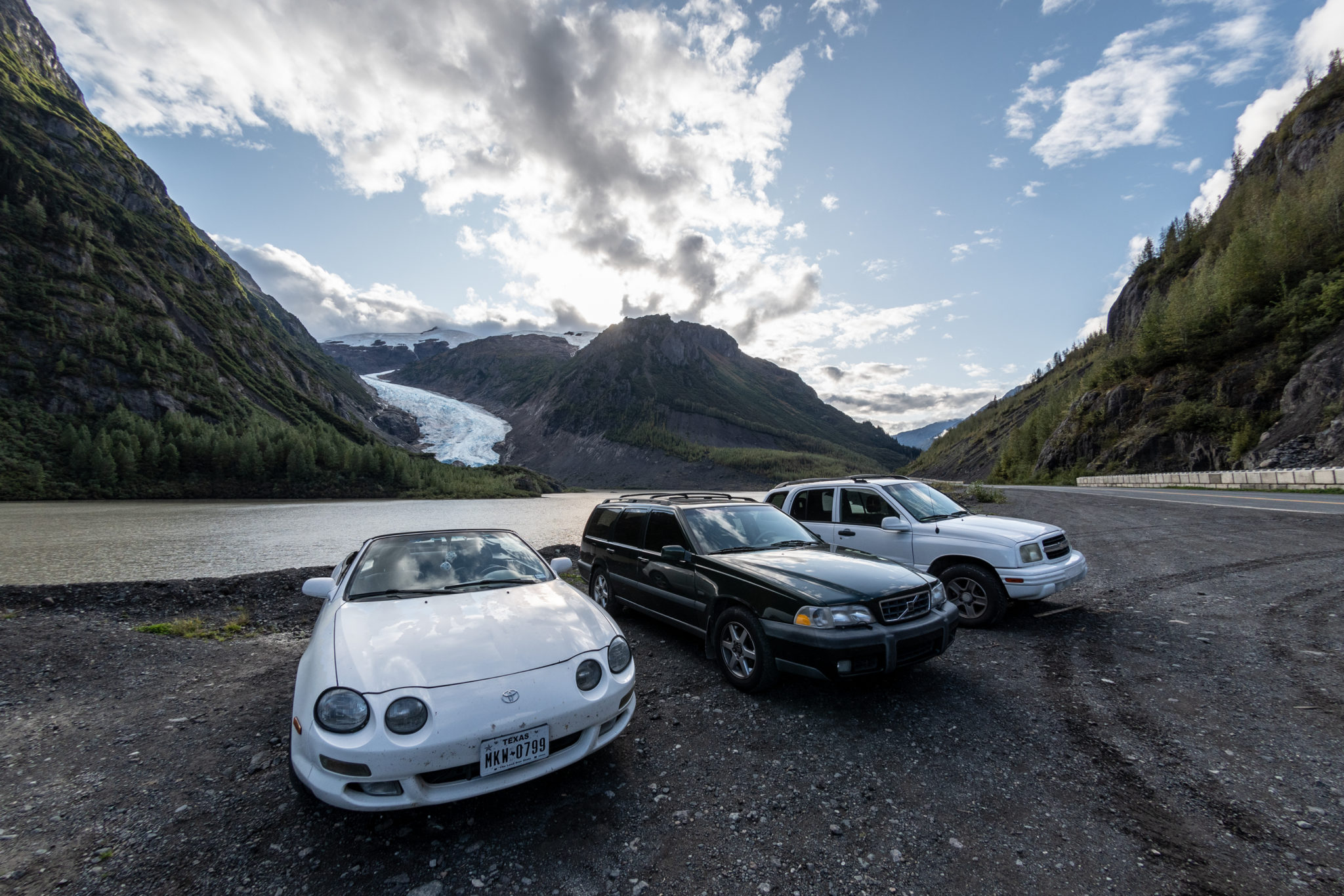
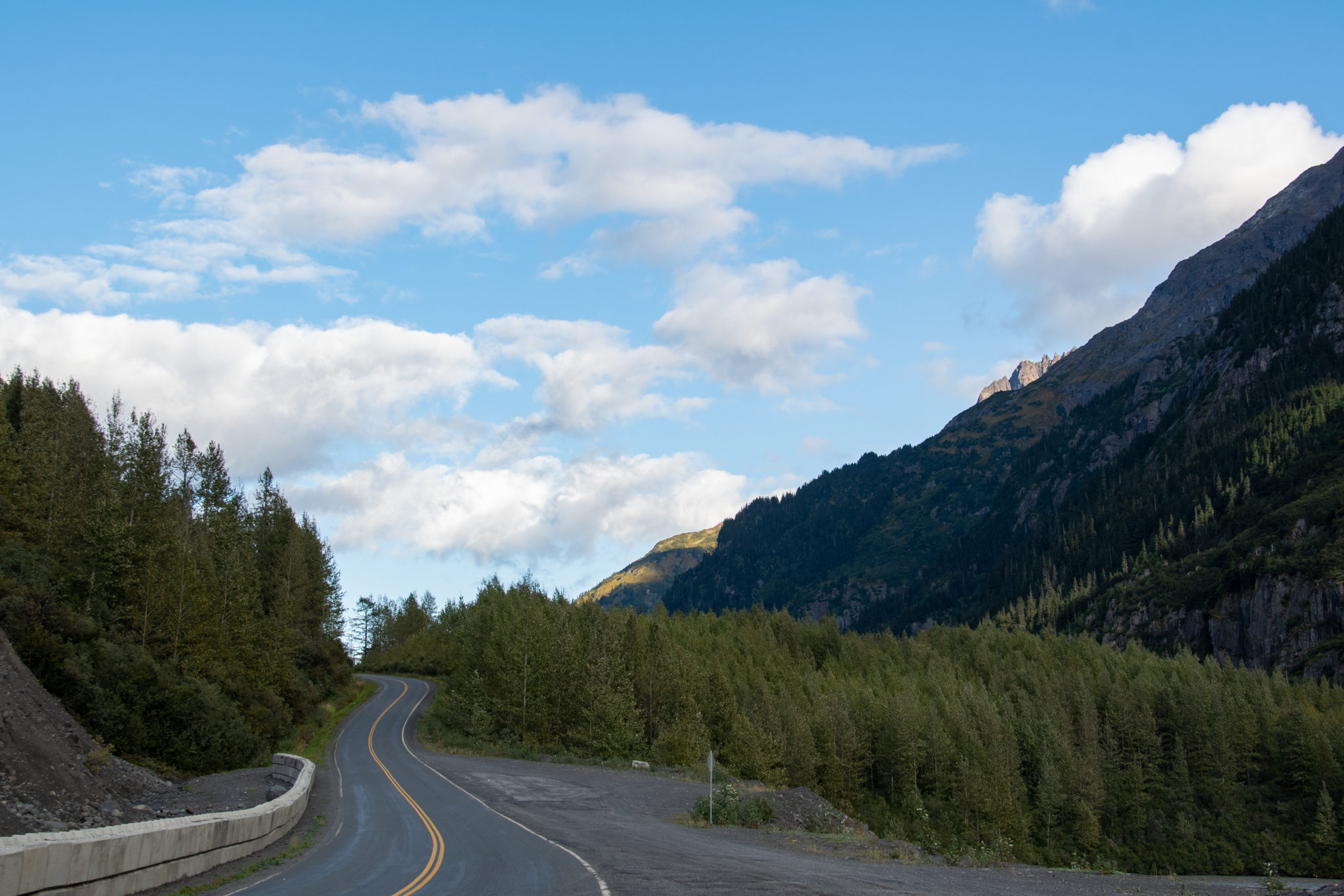
Finally we rolled into Stewart. Into this epic AirBnB. Where did you stay last night?
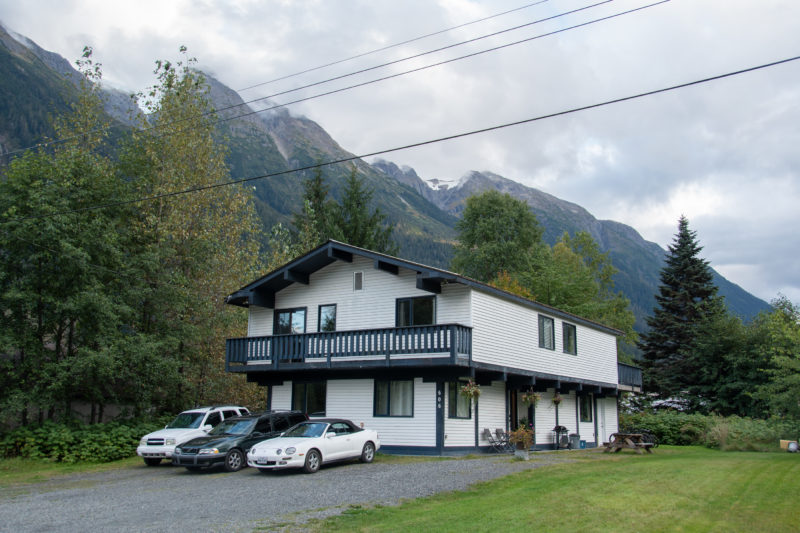
Stewart is interesting, there’s a bit of new construction plus also tons of derelict buildings. One restaurant even has signs that they’re closing their dinner service due to staffing shortage. We hit up the only open restaurant in town and then took a stroll on the boardwalk over the estuary on the edge of town.
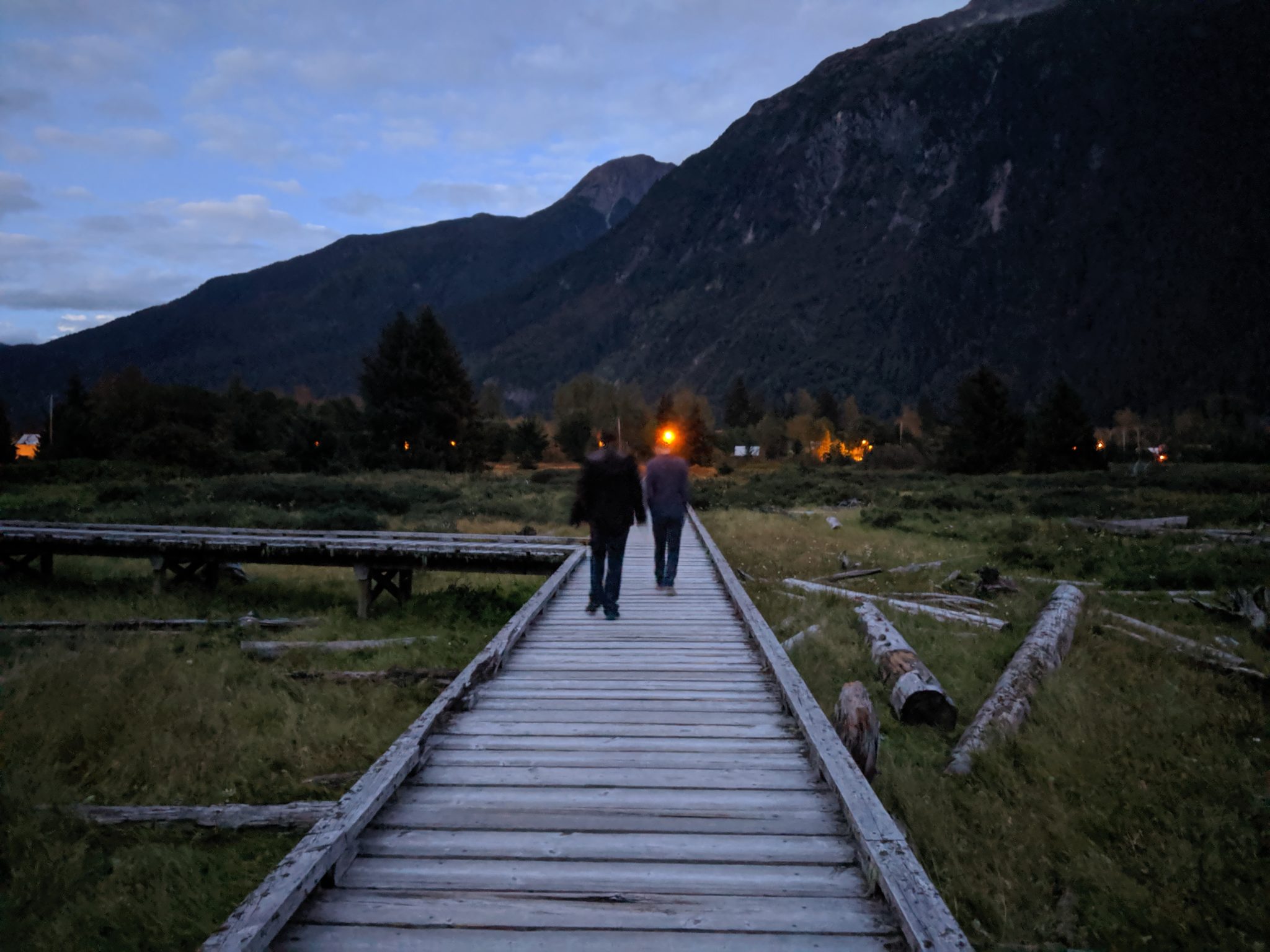
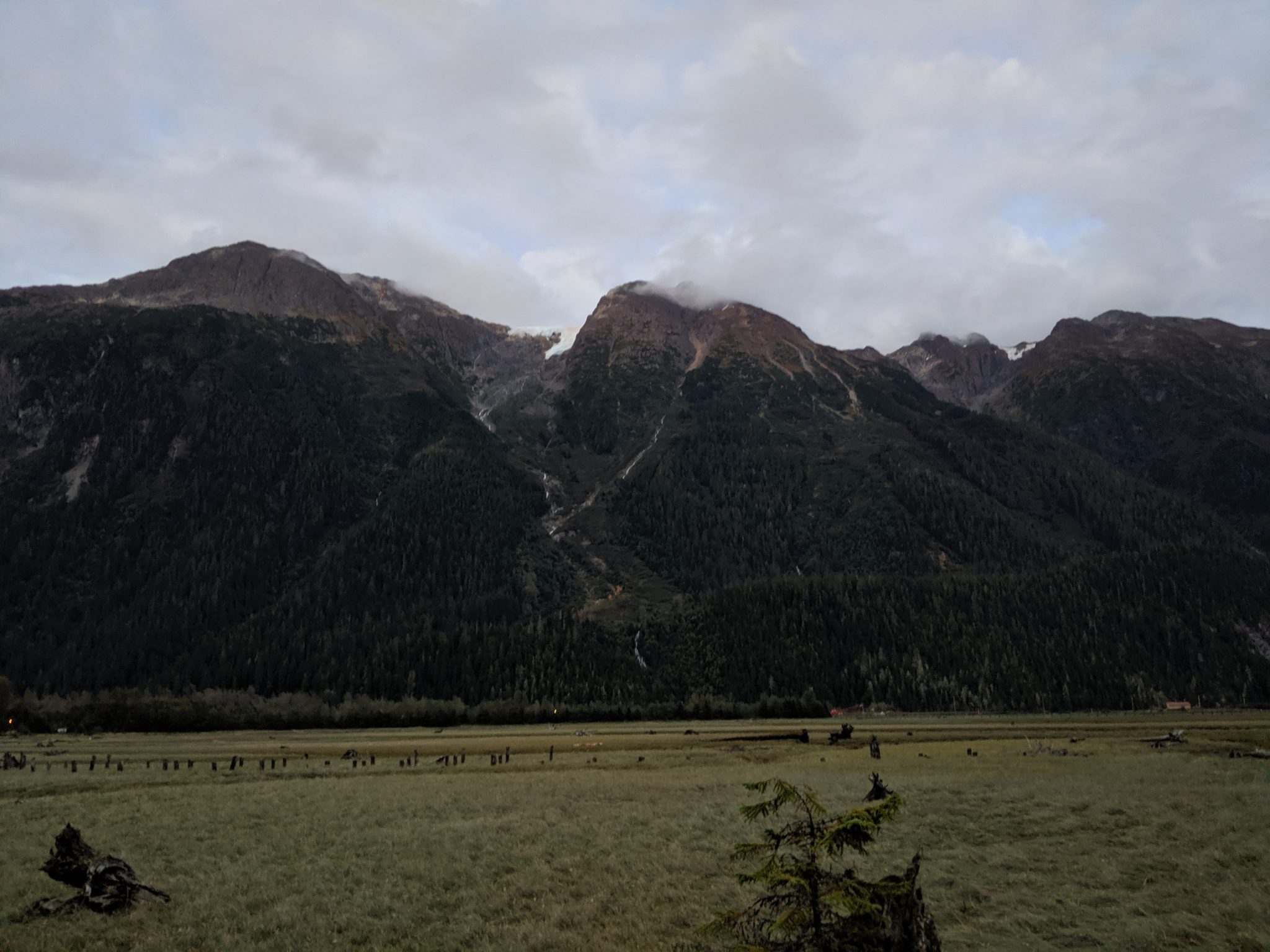
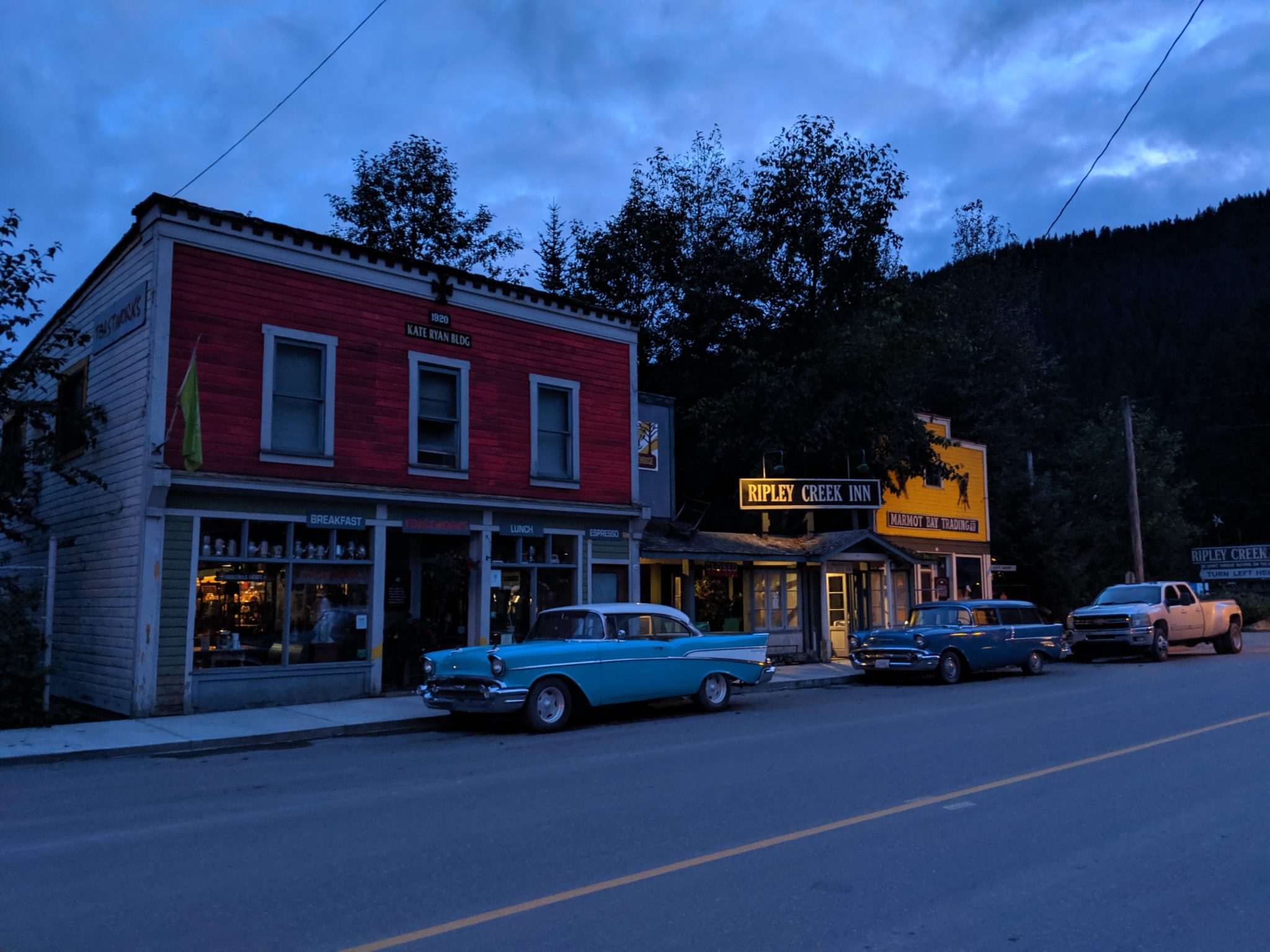
We regarded Stewart as a detour, it added about an hour each way from Meziadin Junction to our drive, but I cannot believe we almost missed this. And it means we get to drive this epic road again in the morning!
